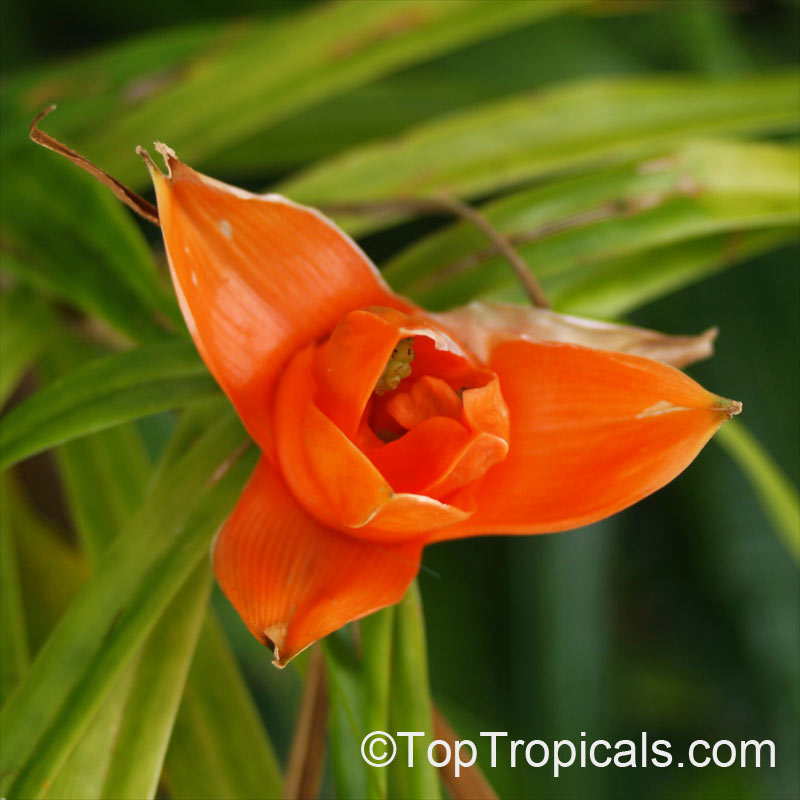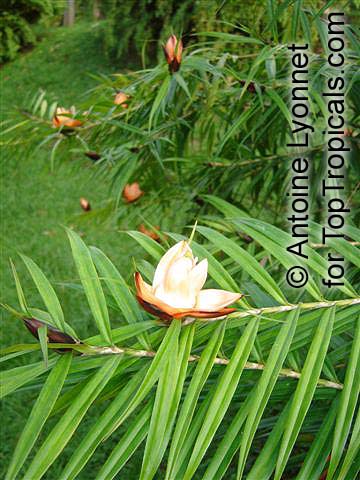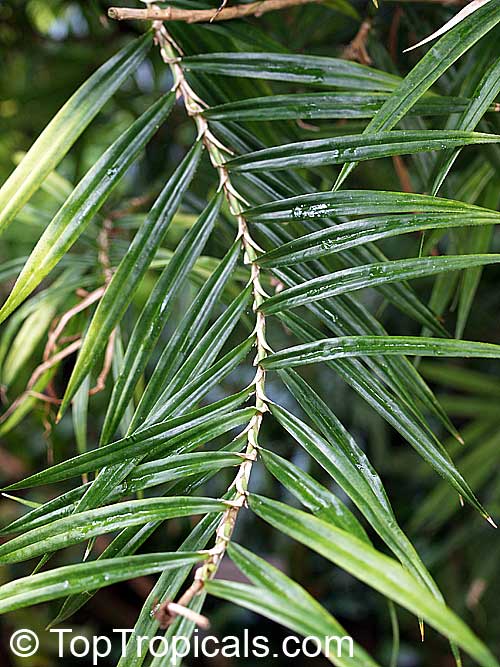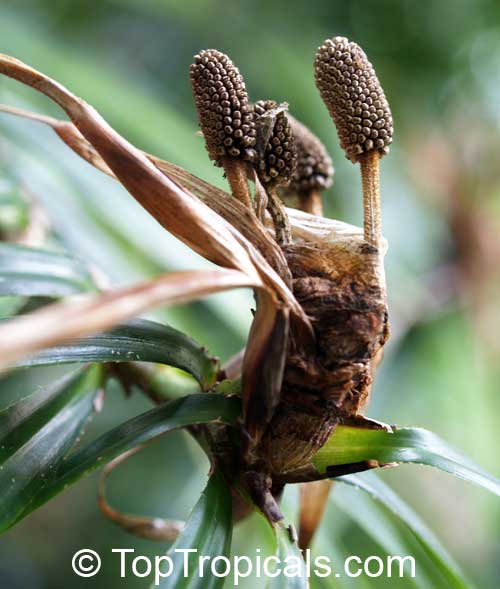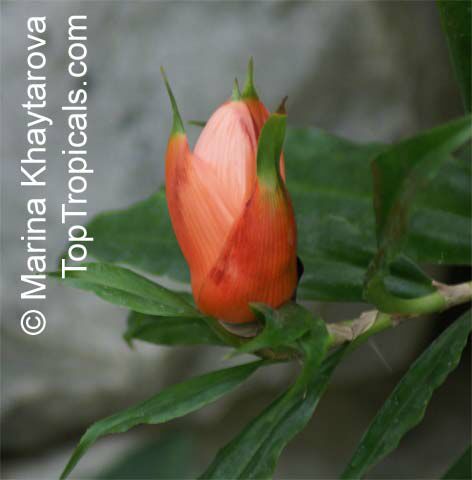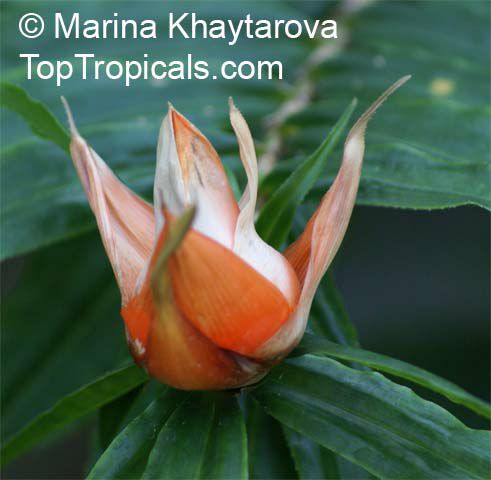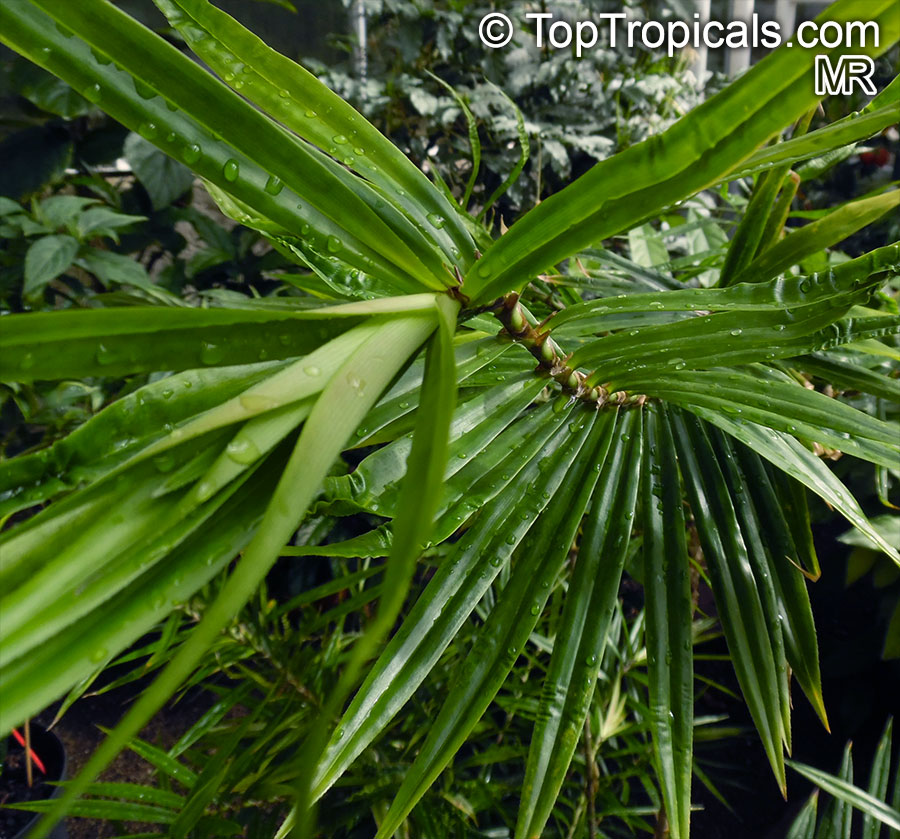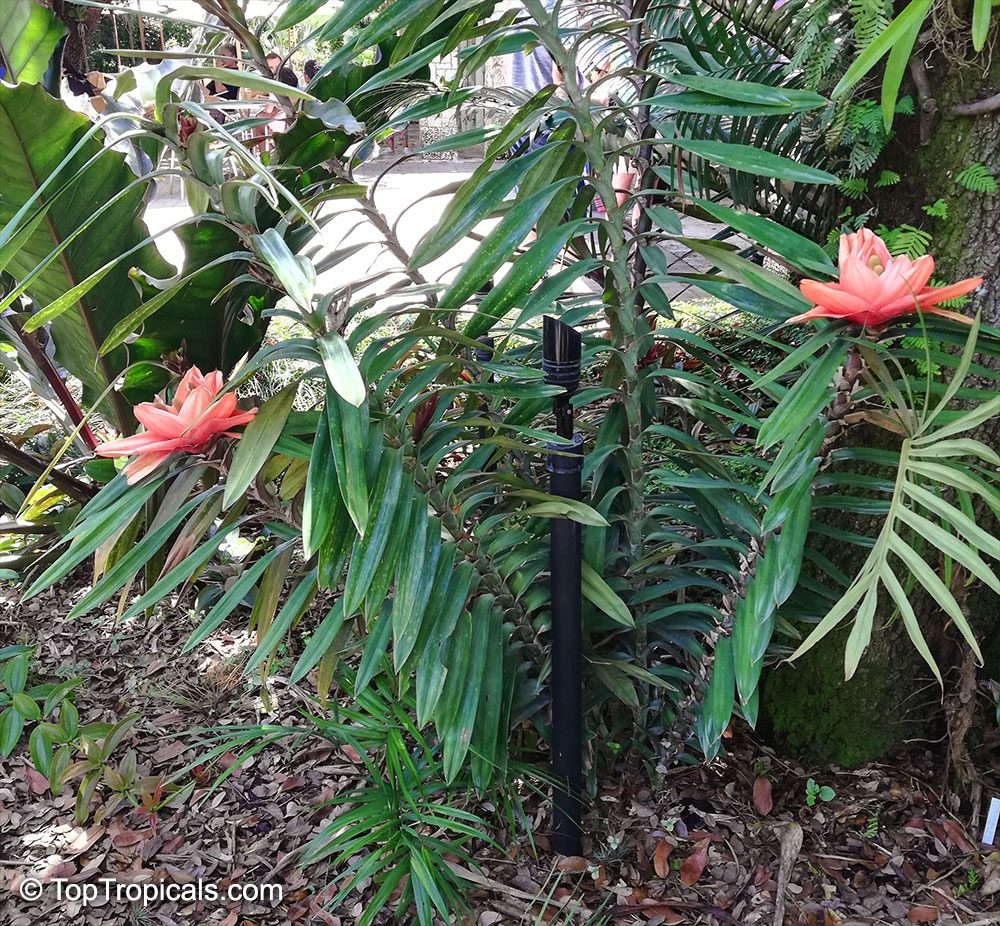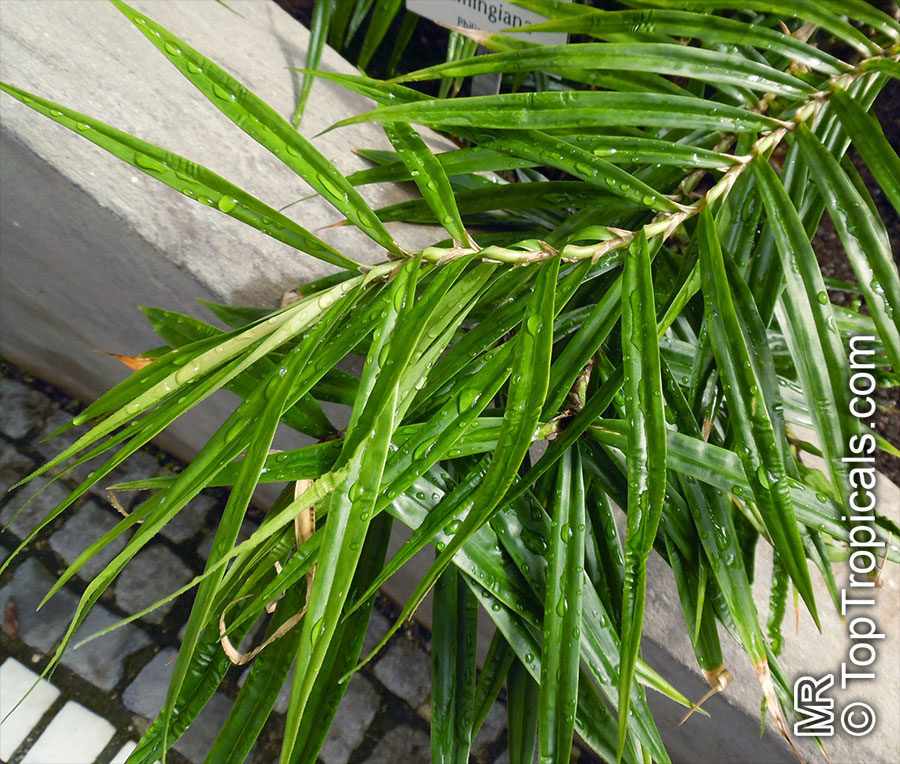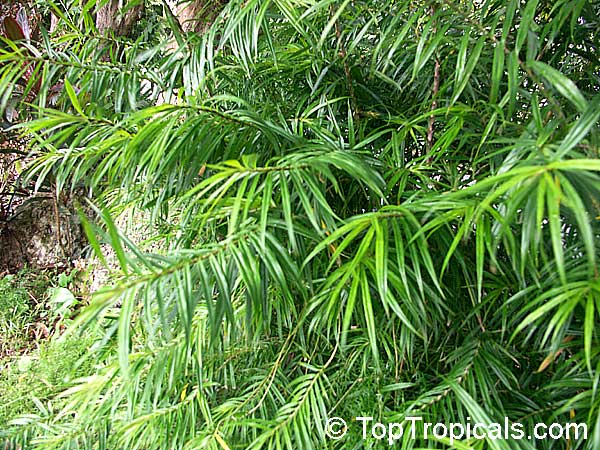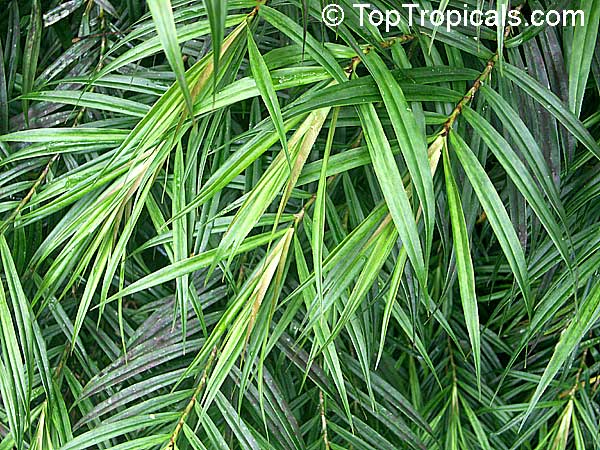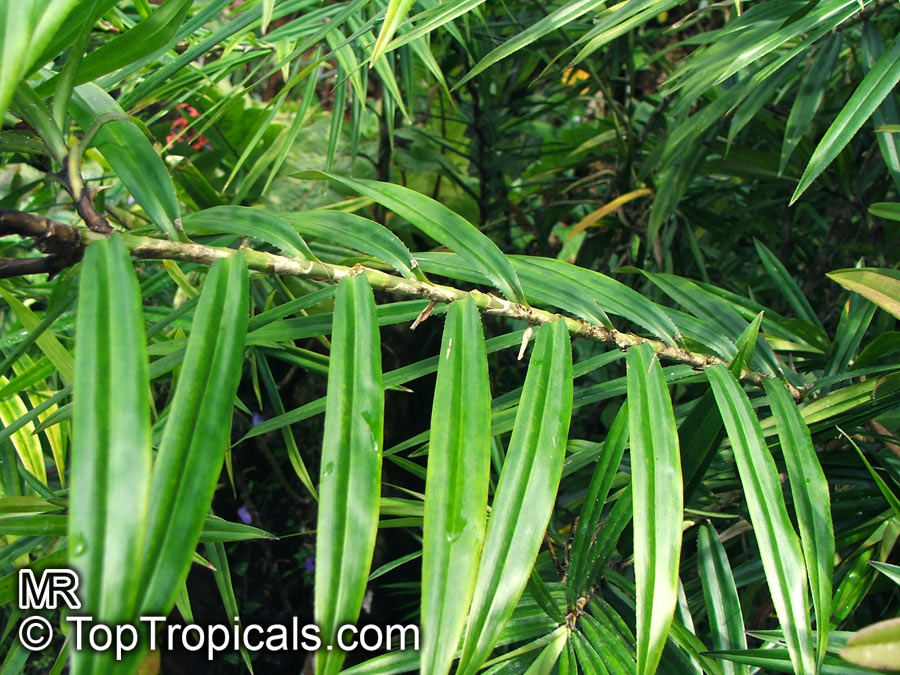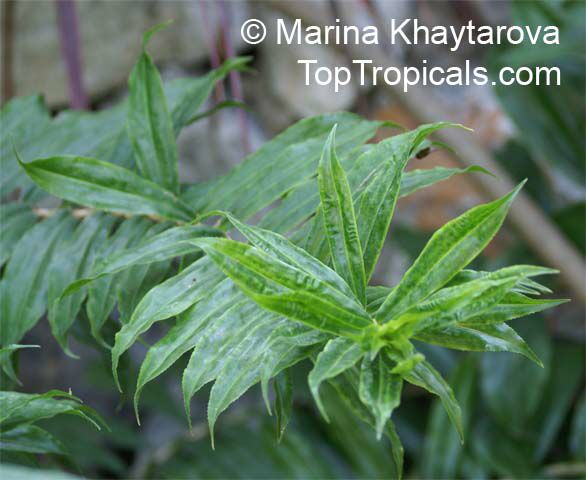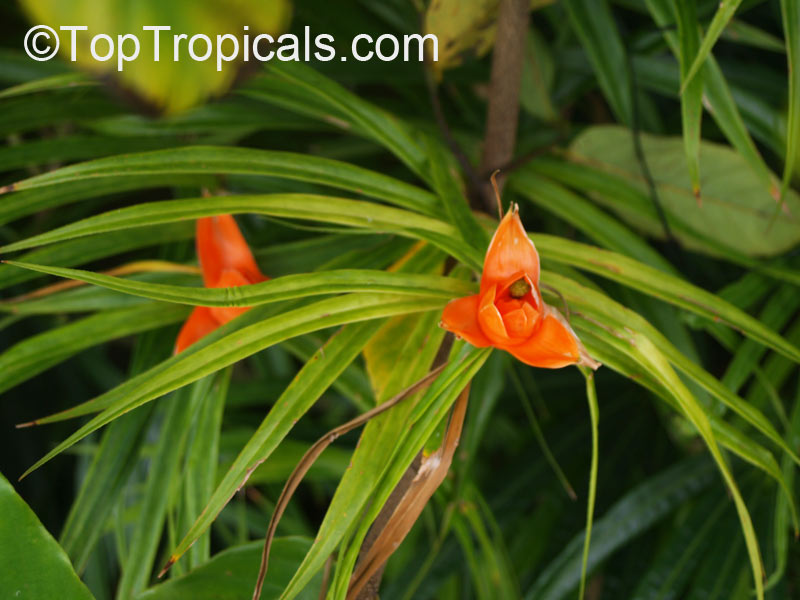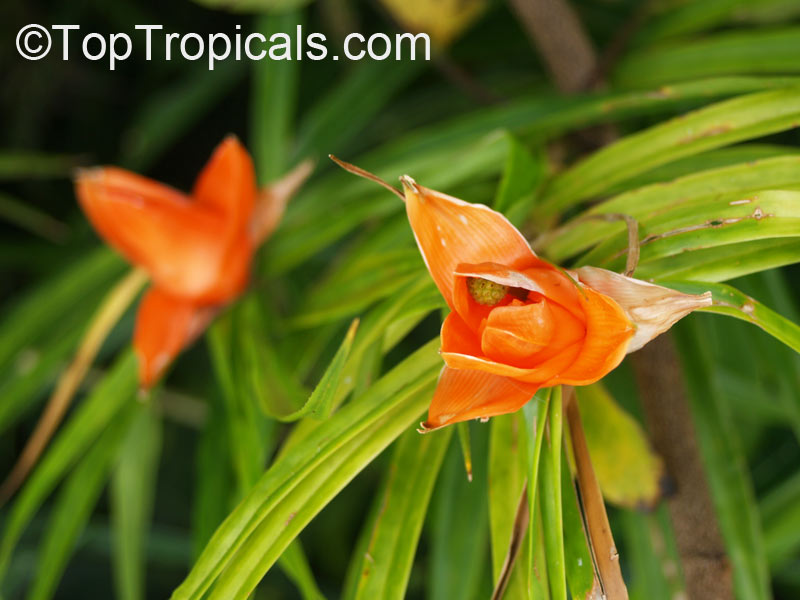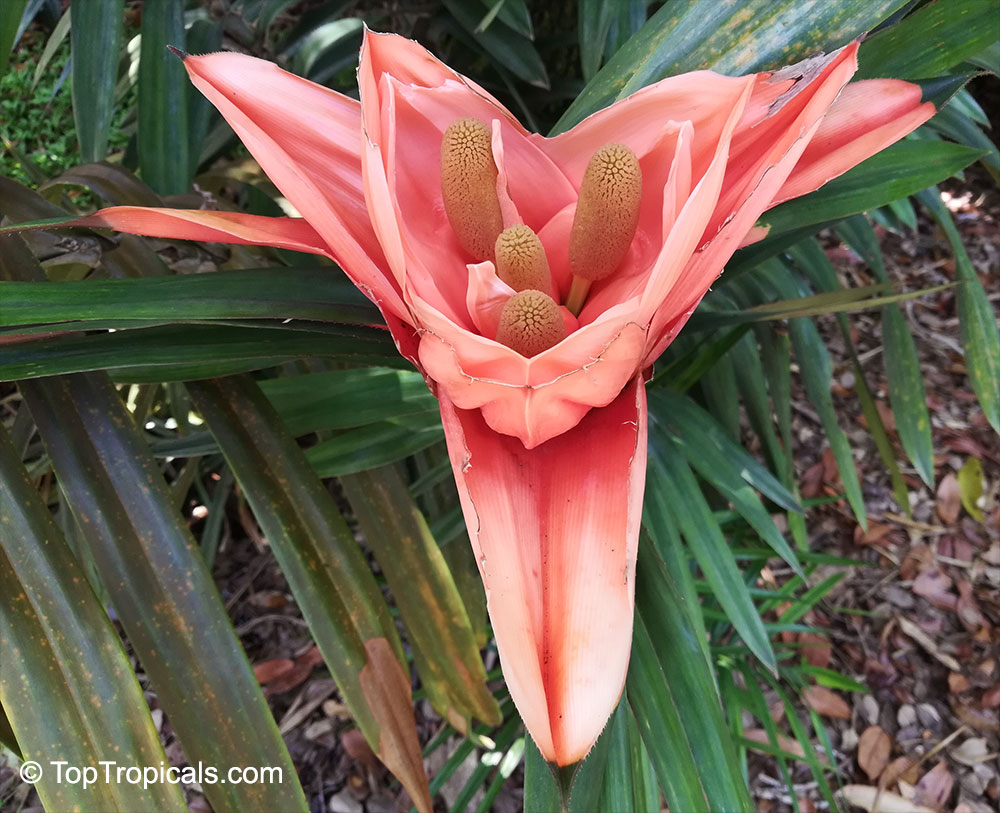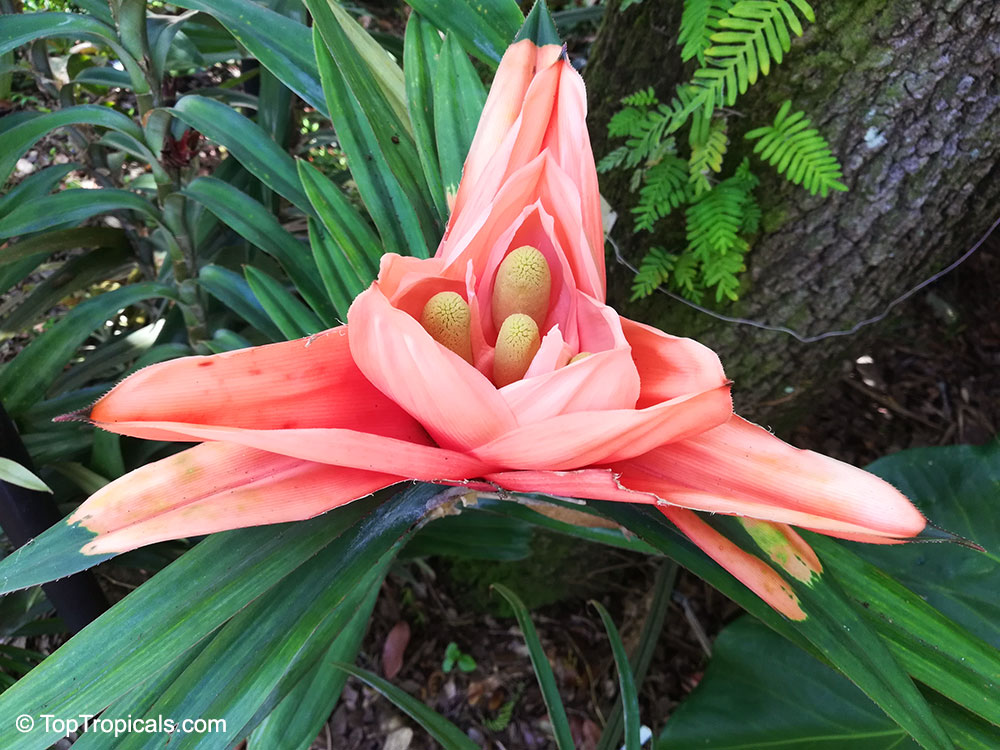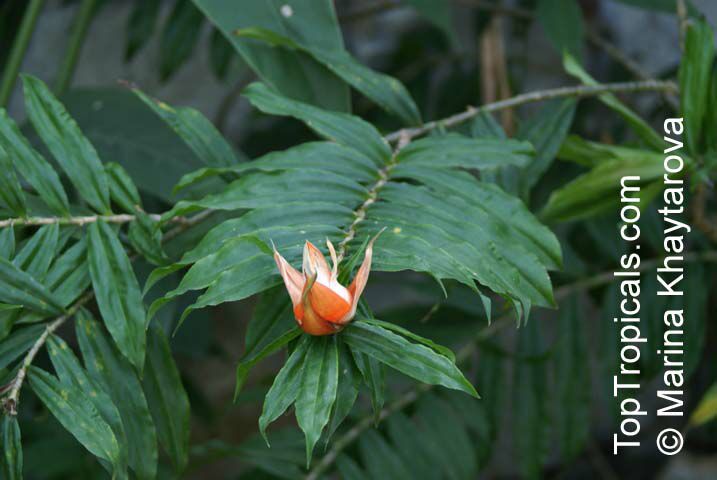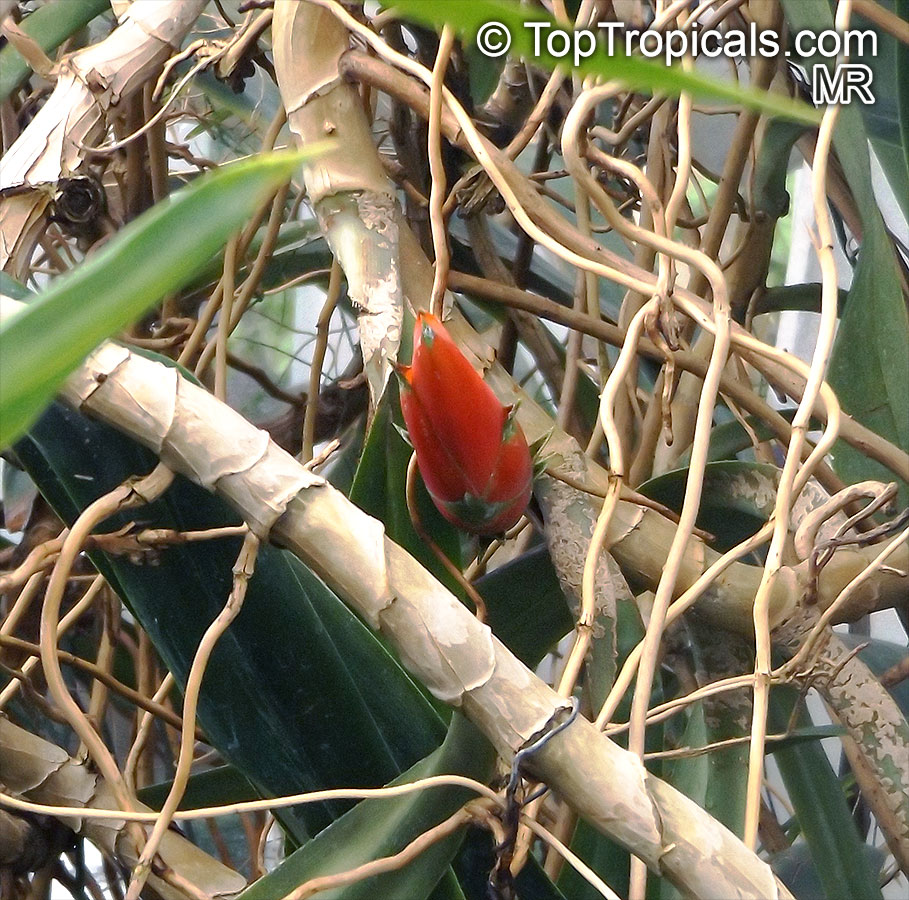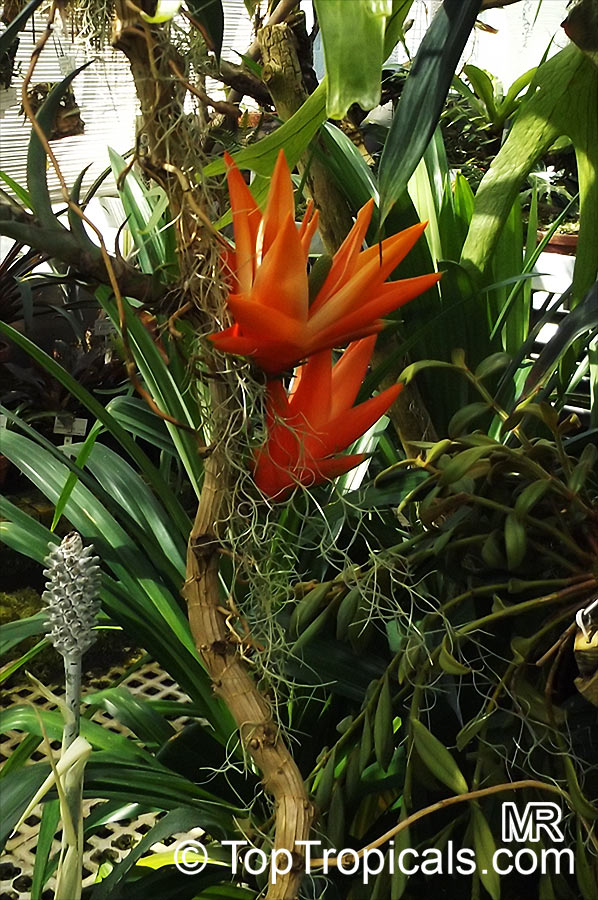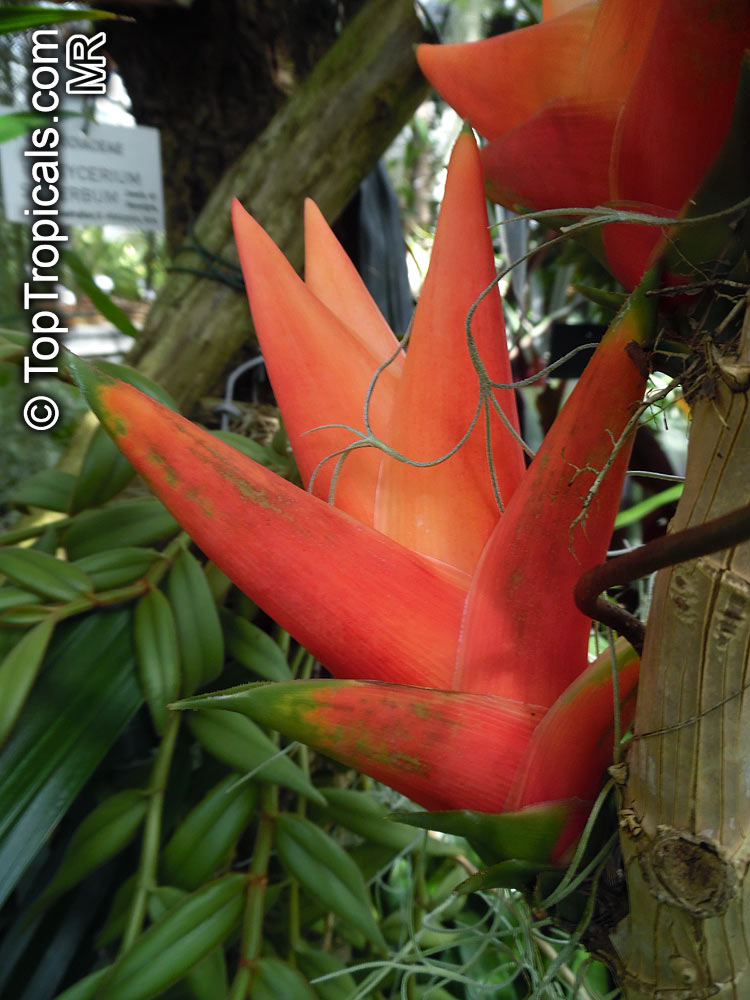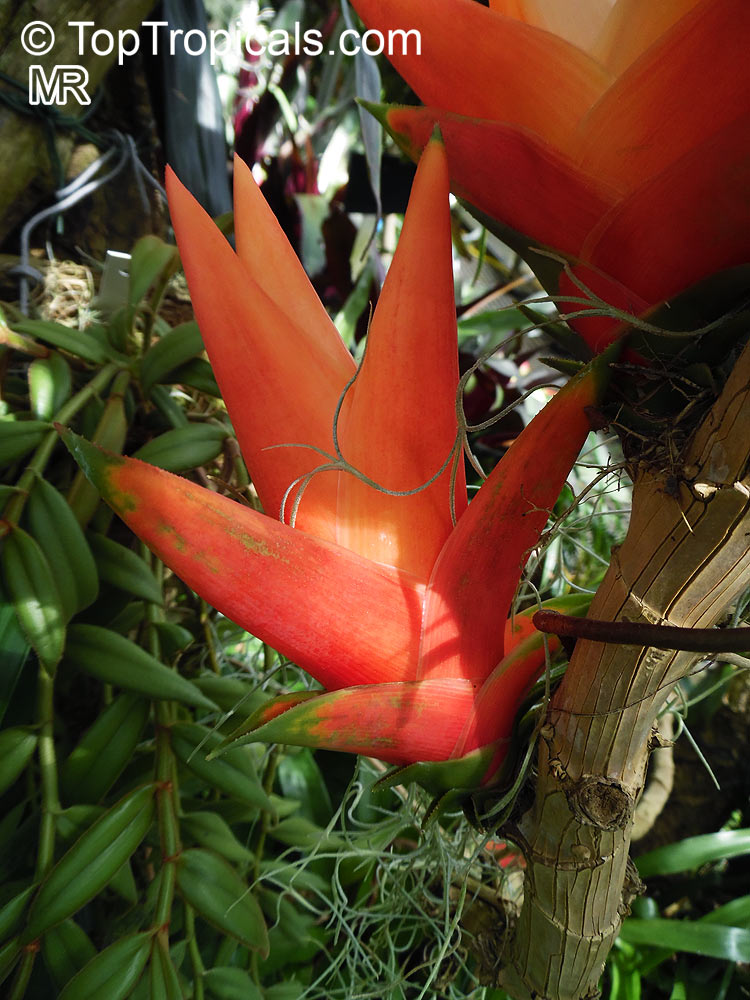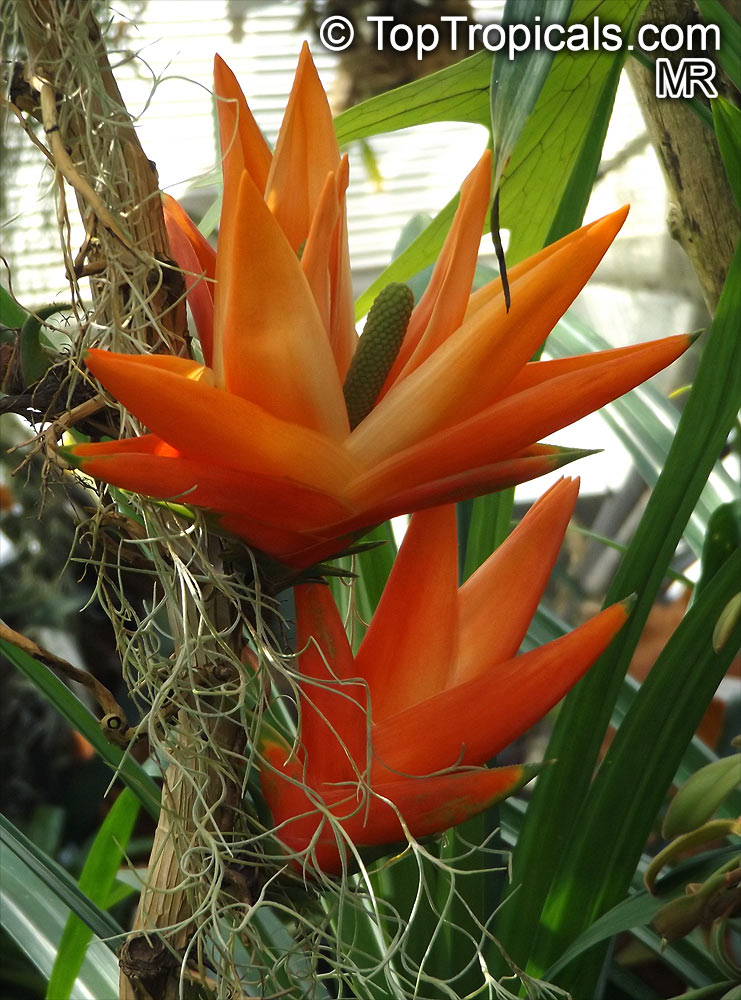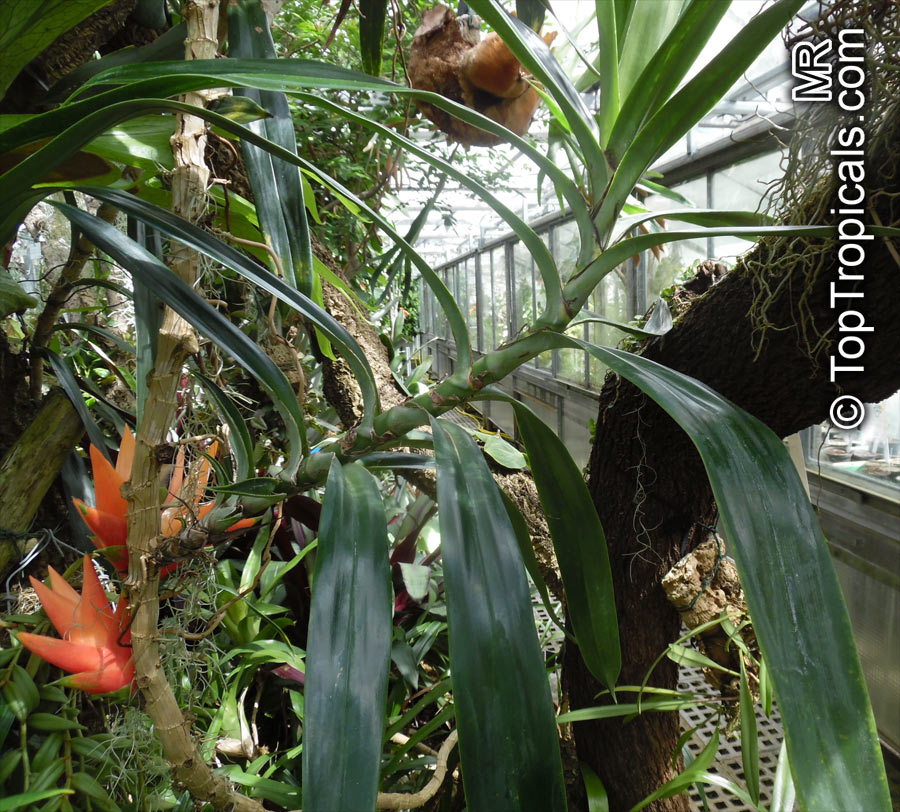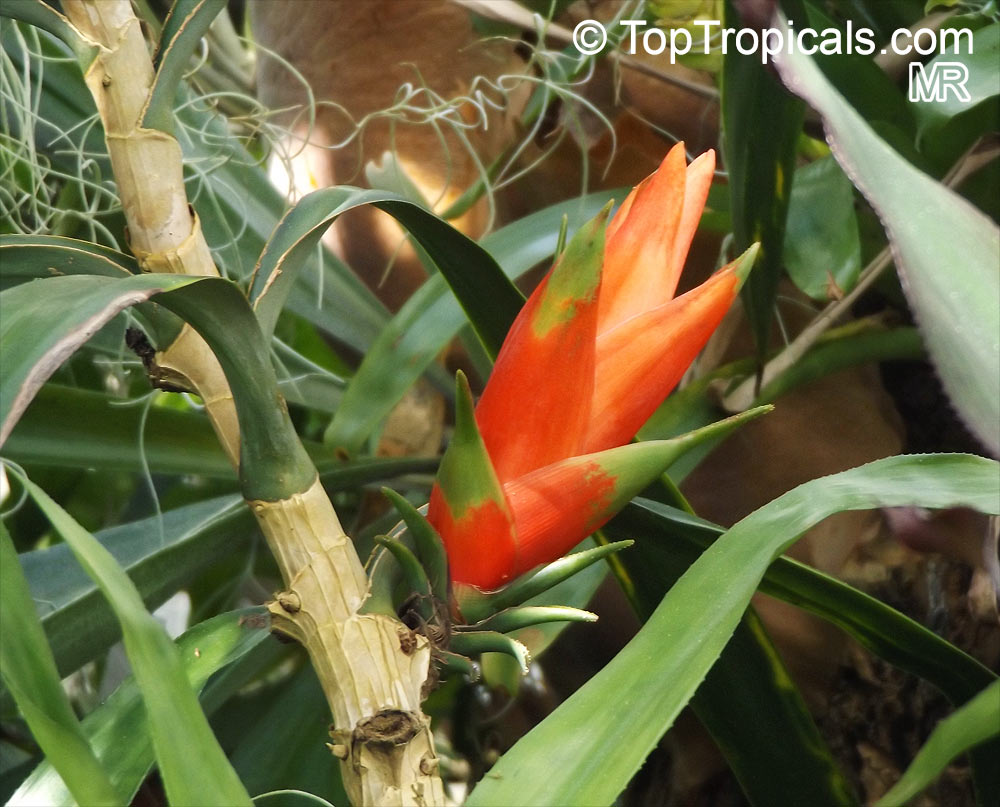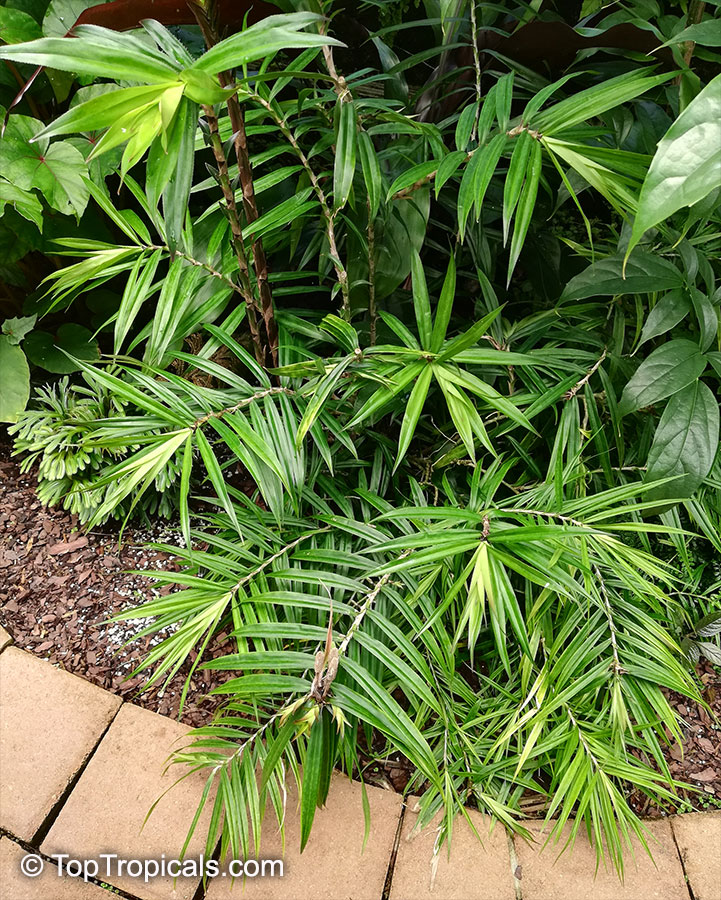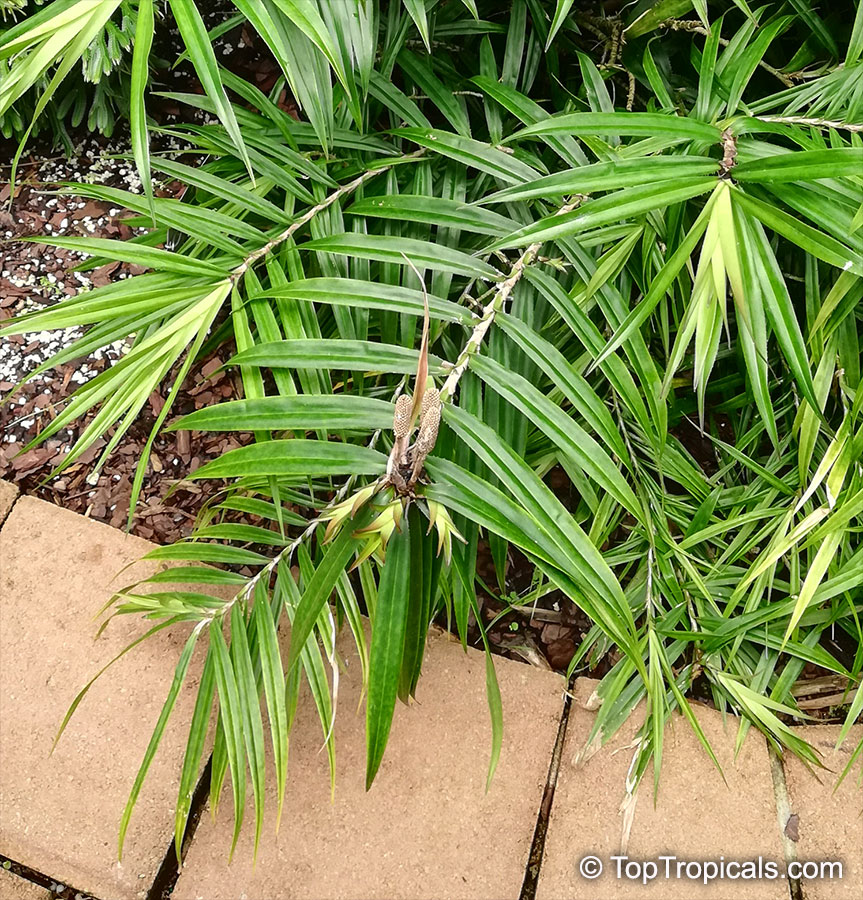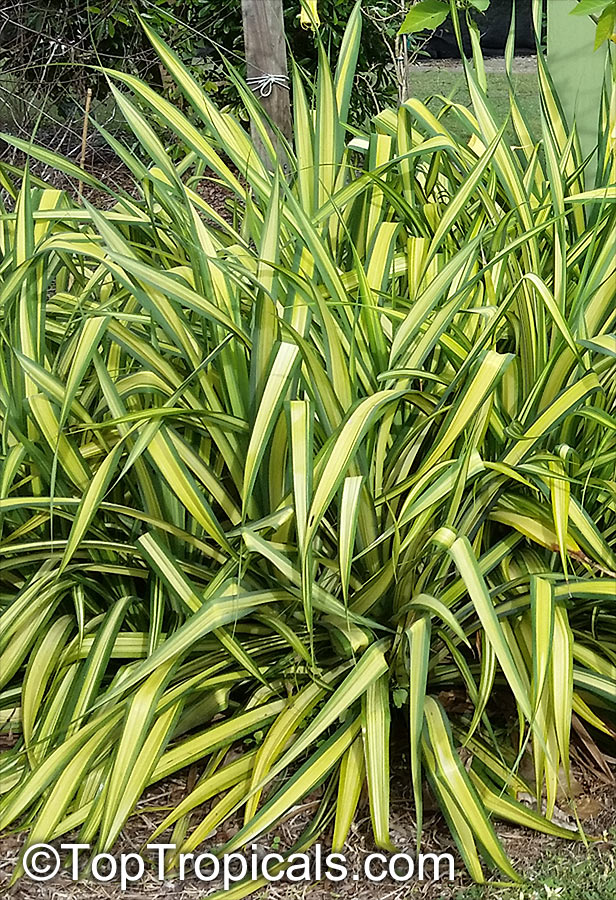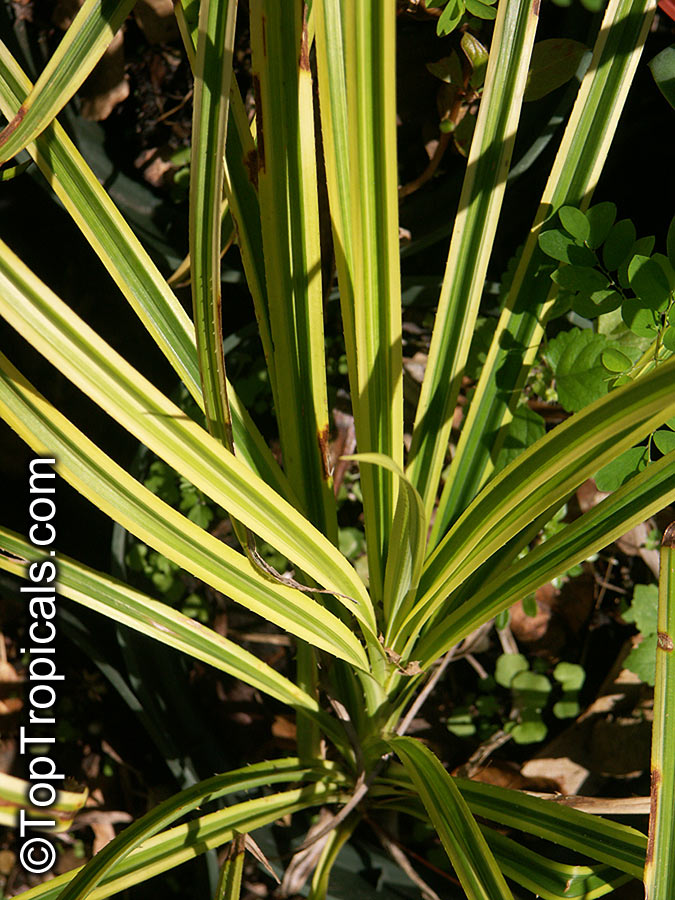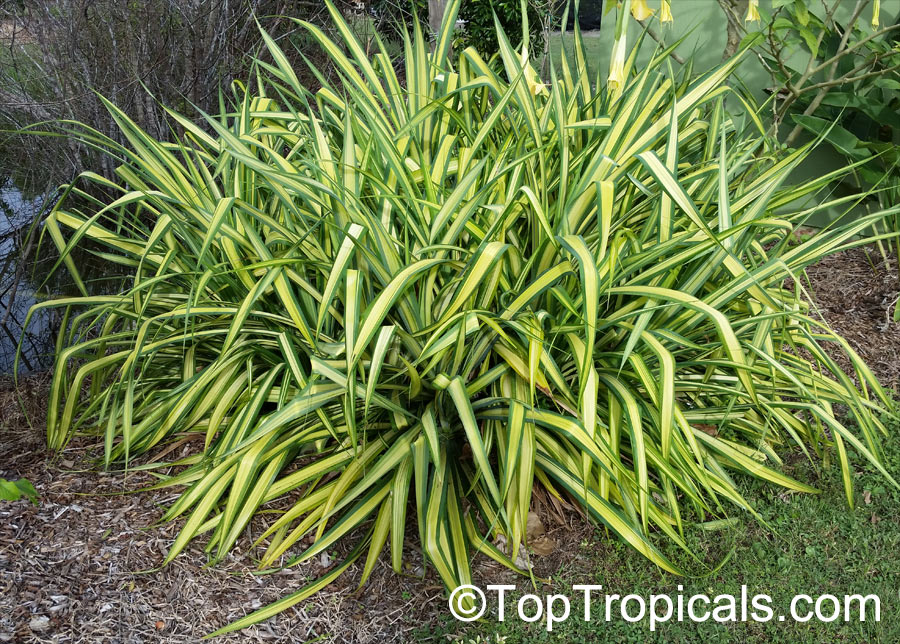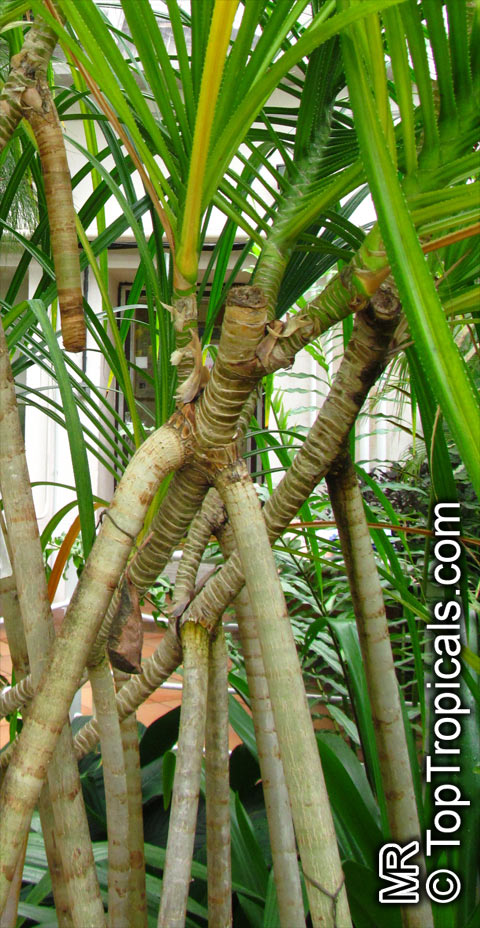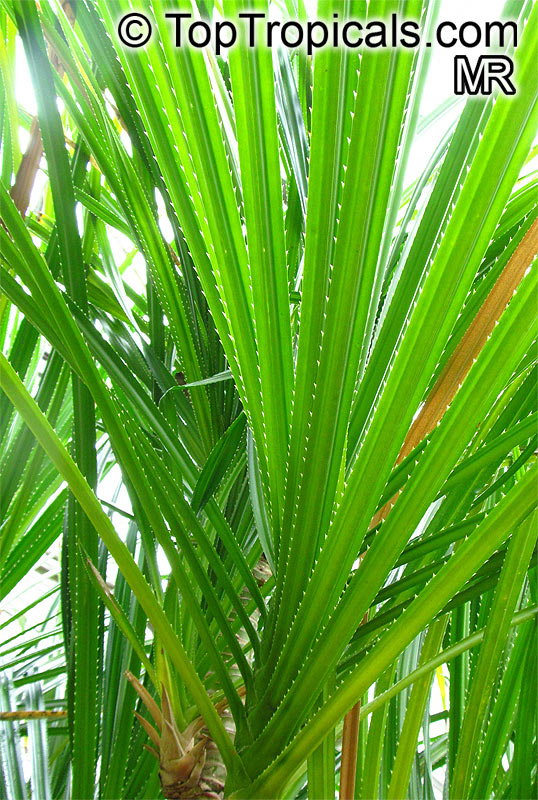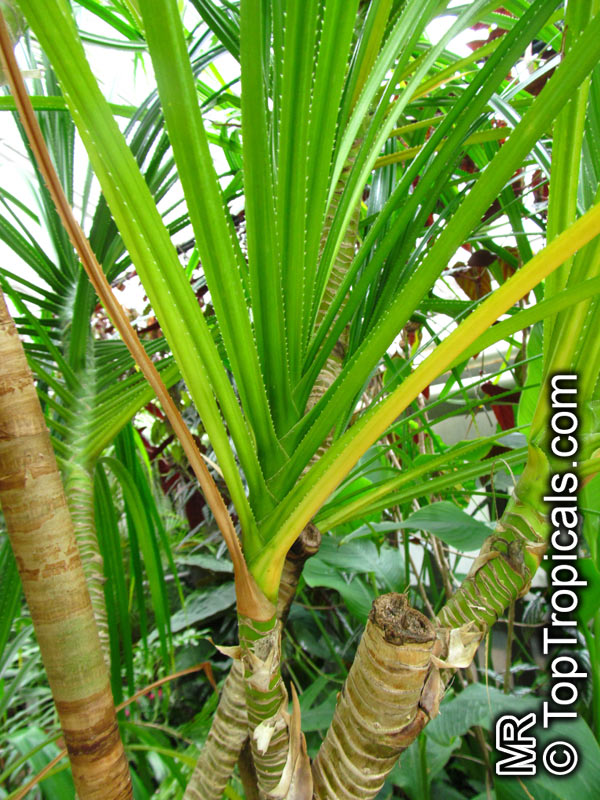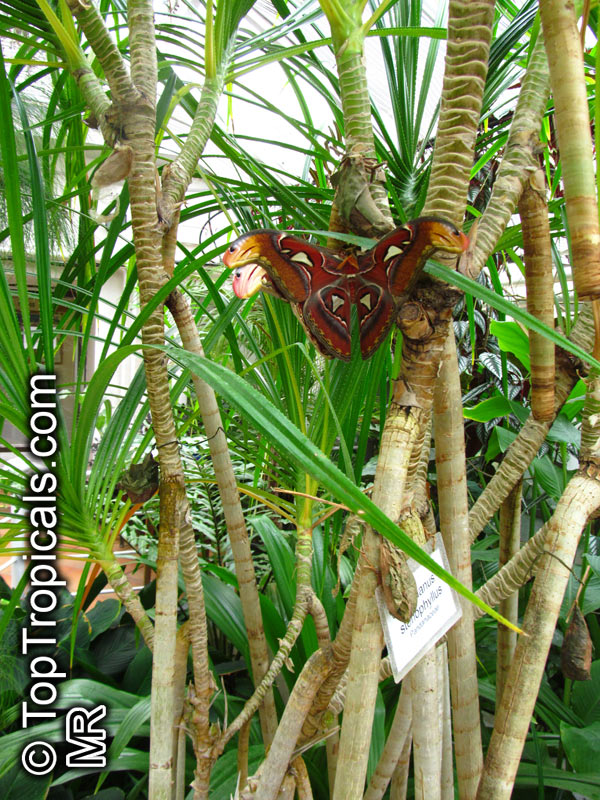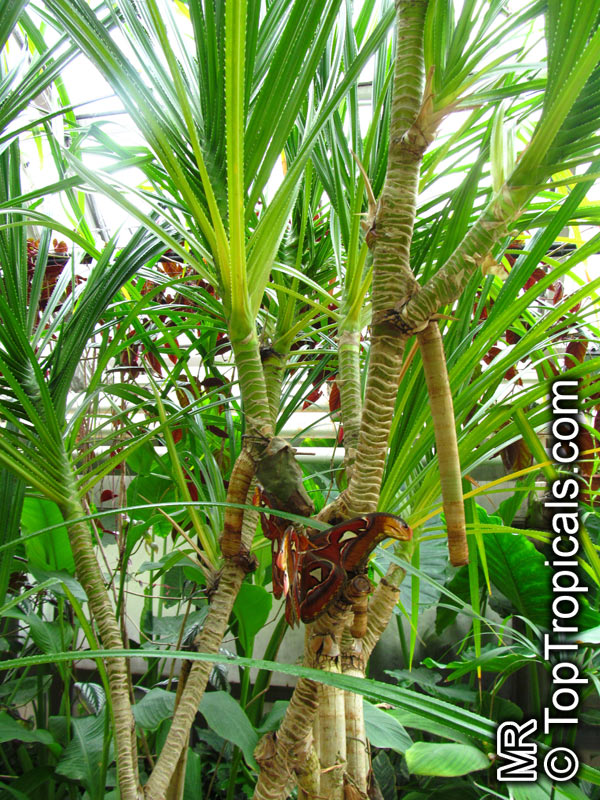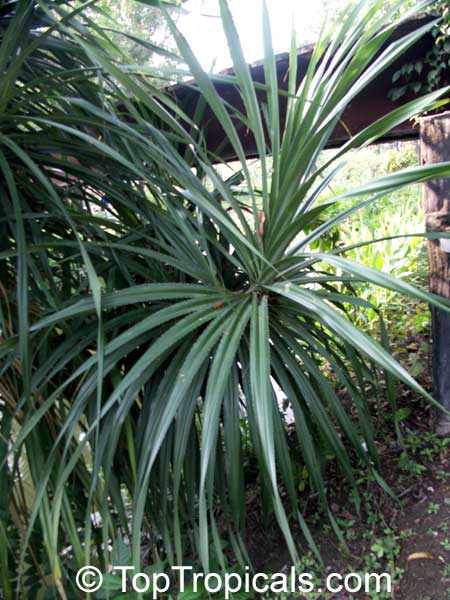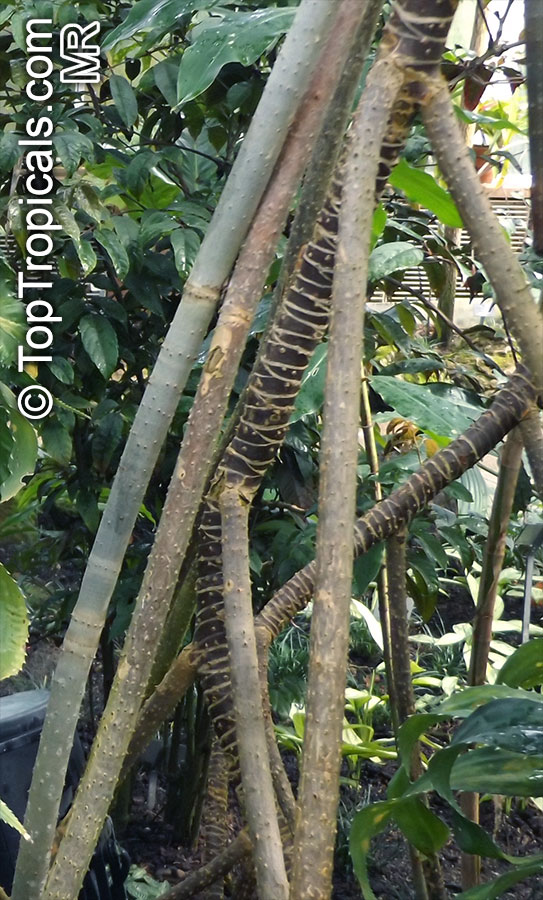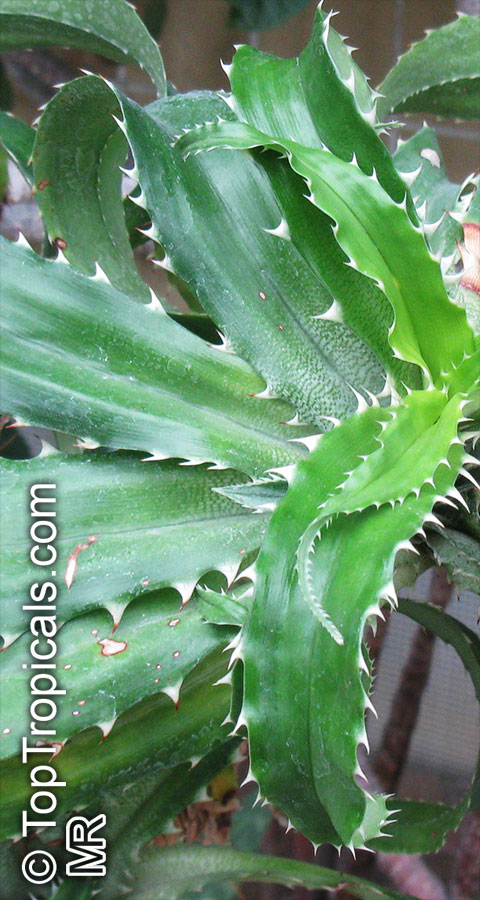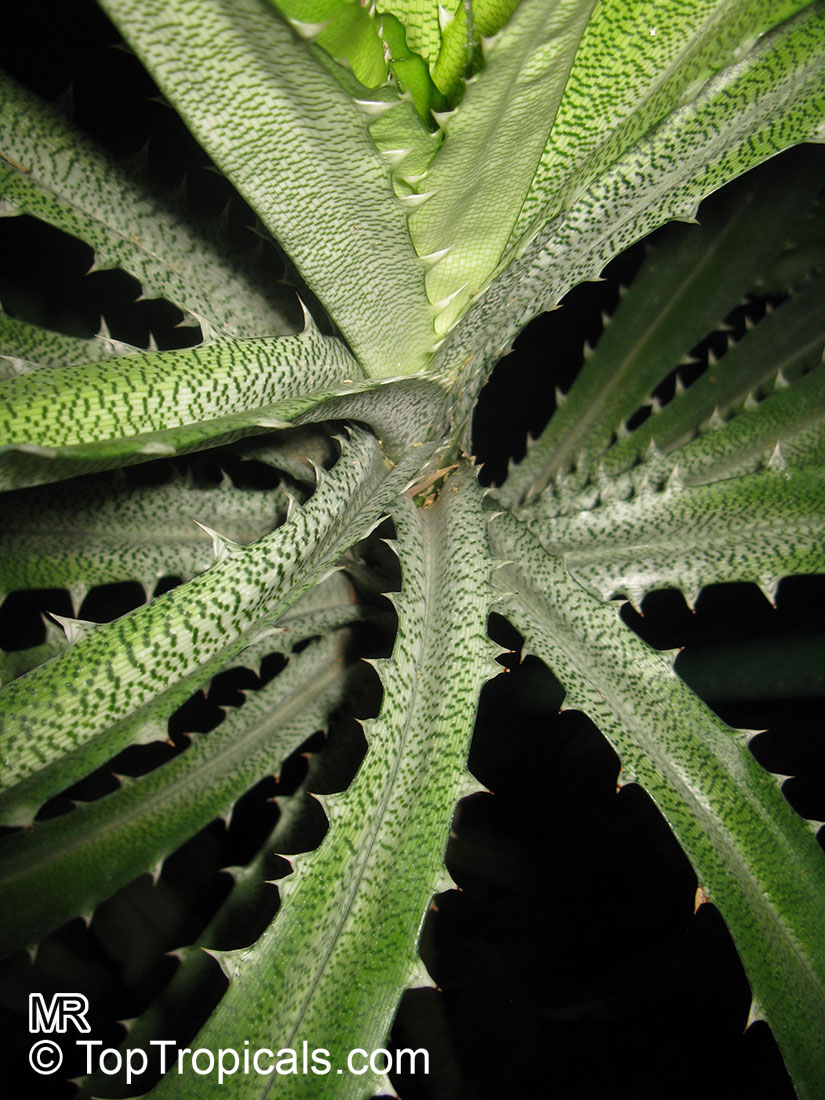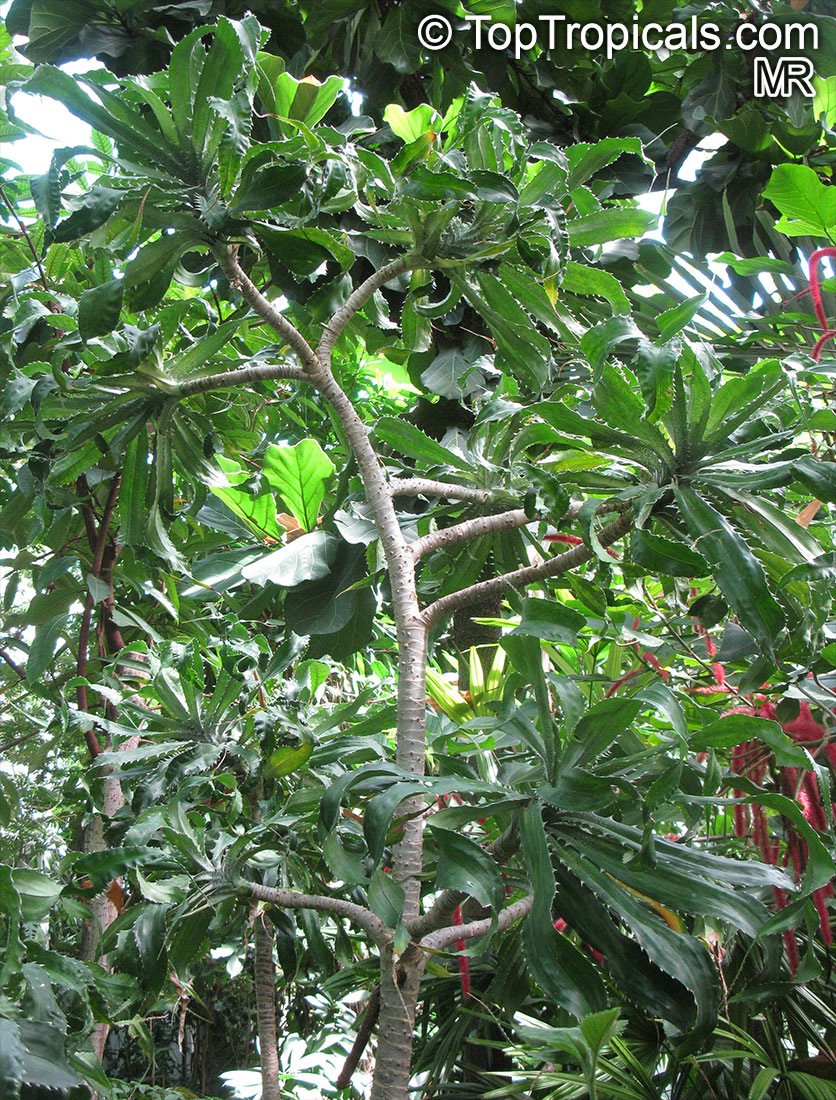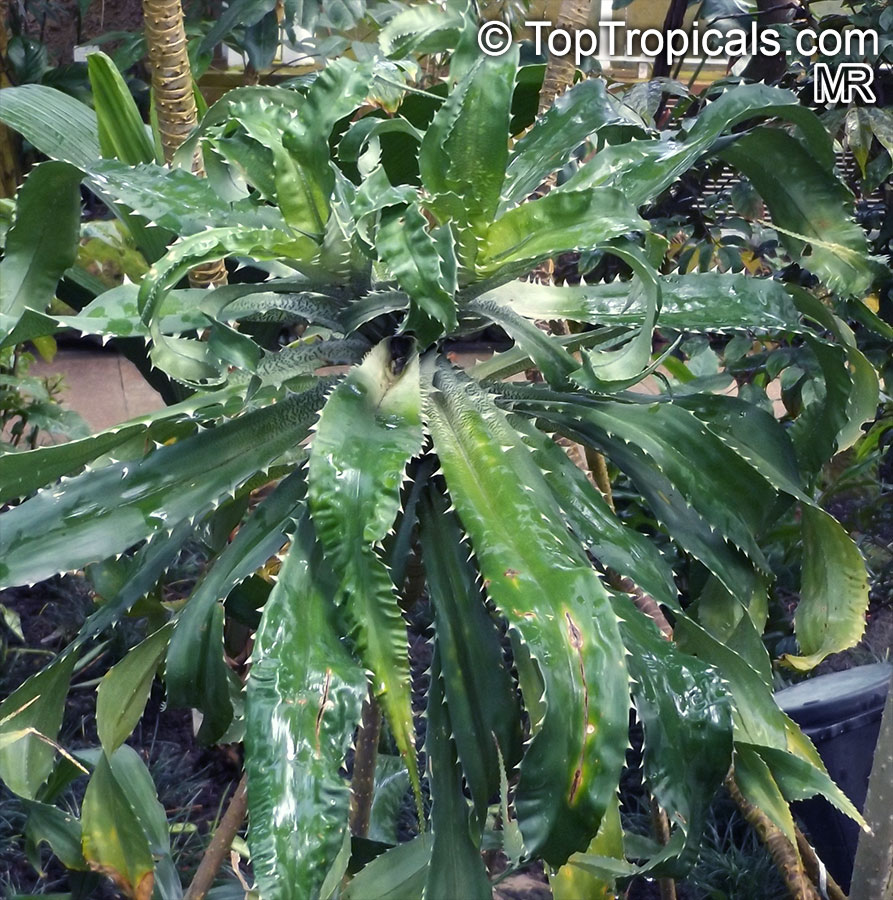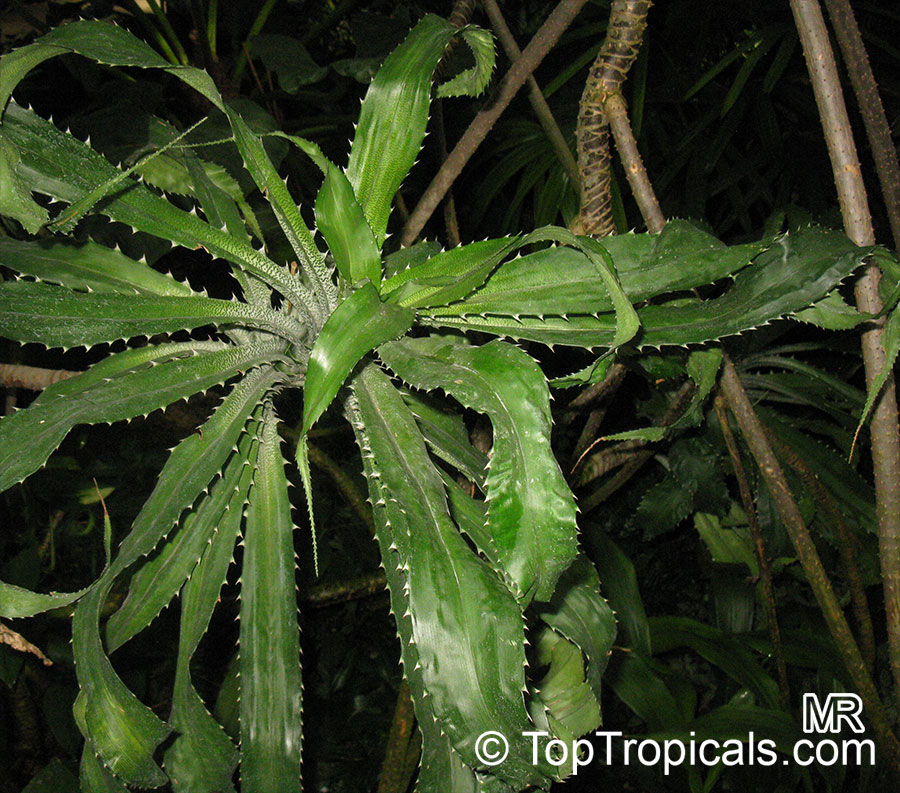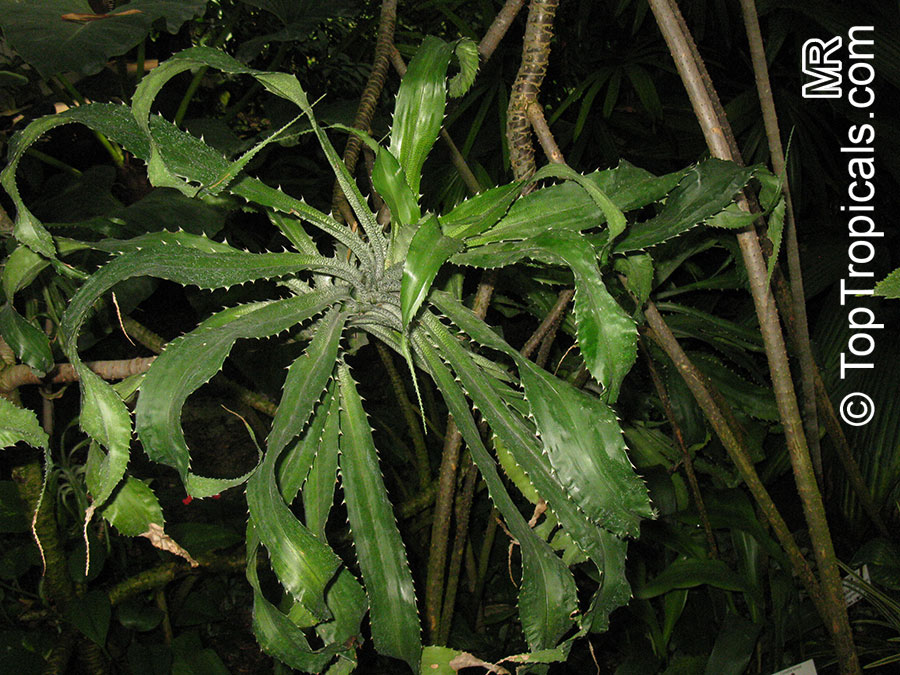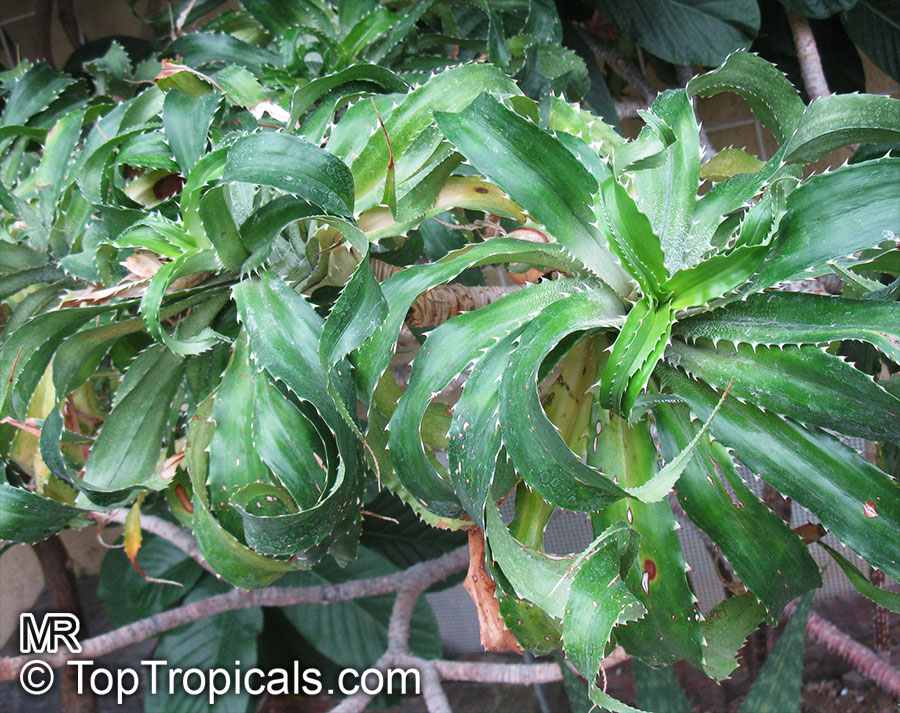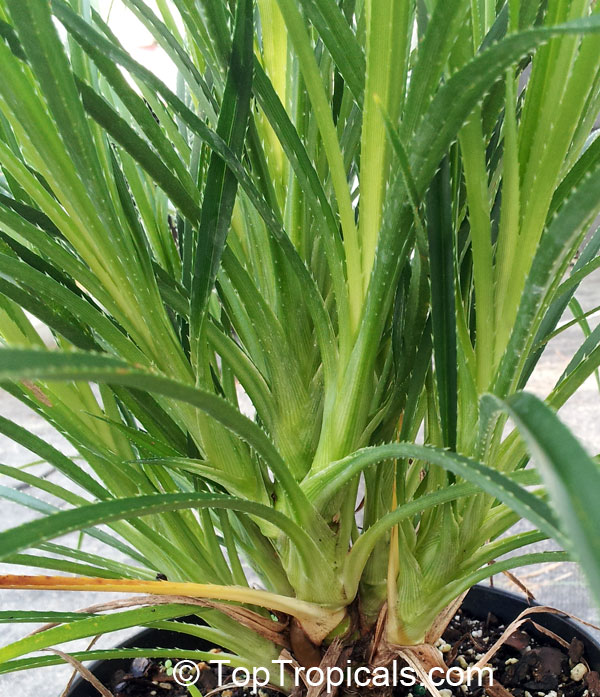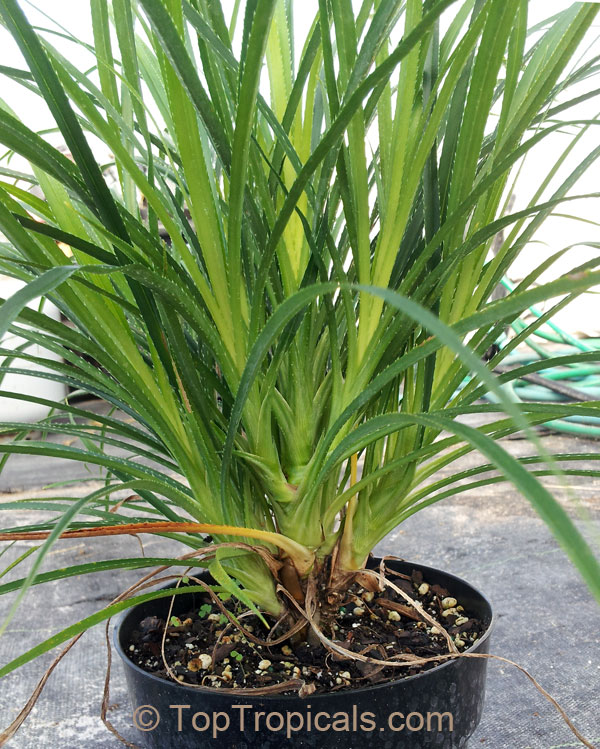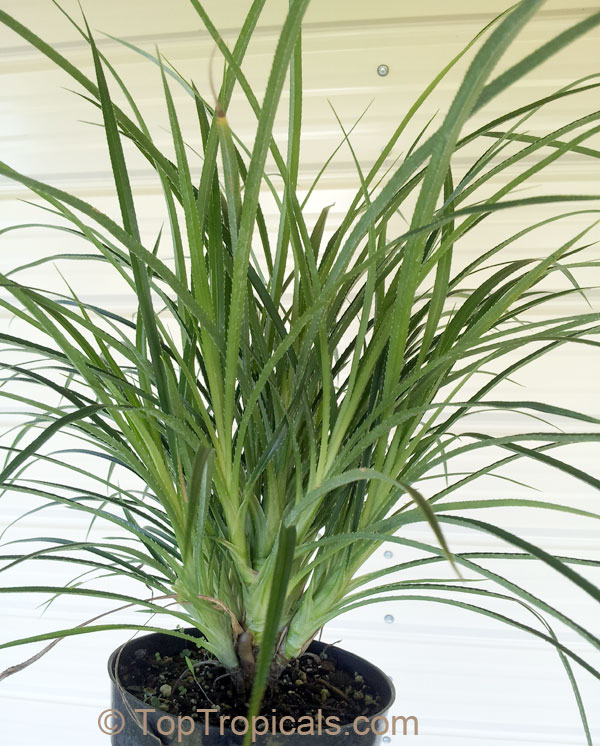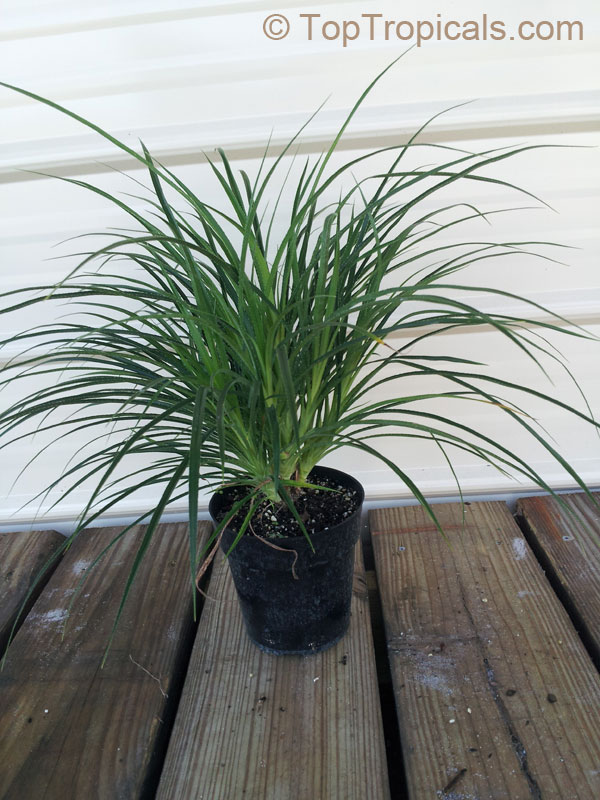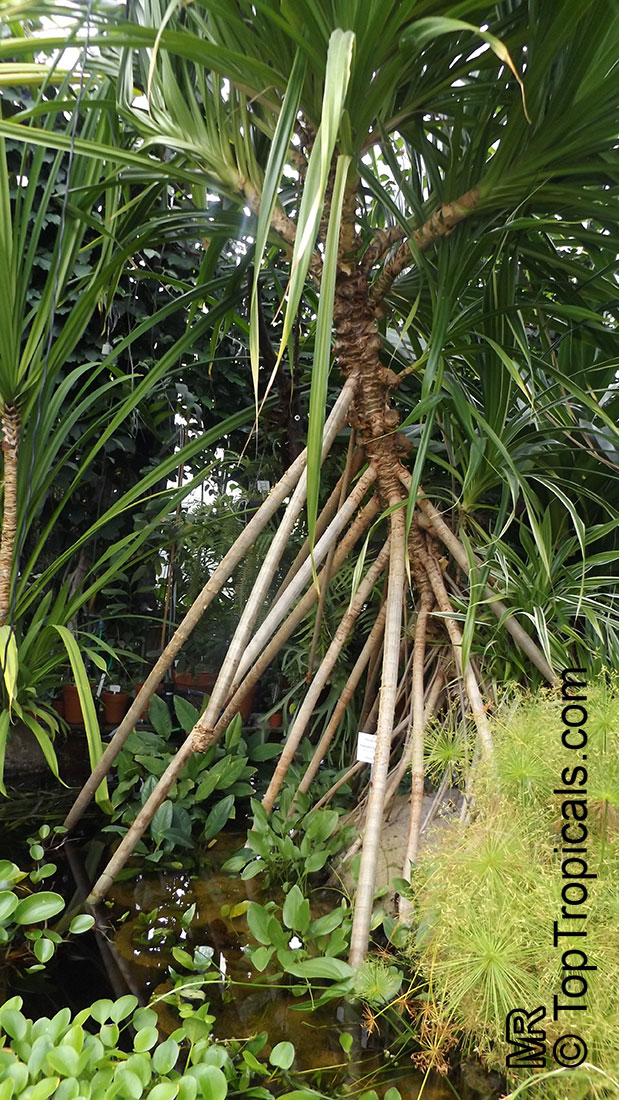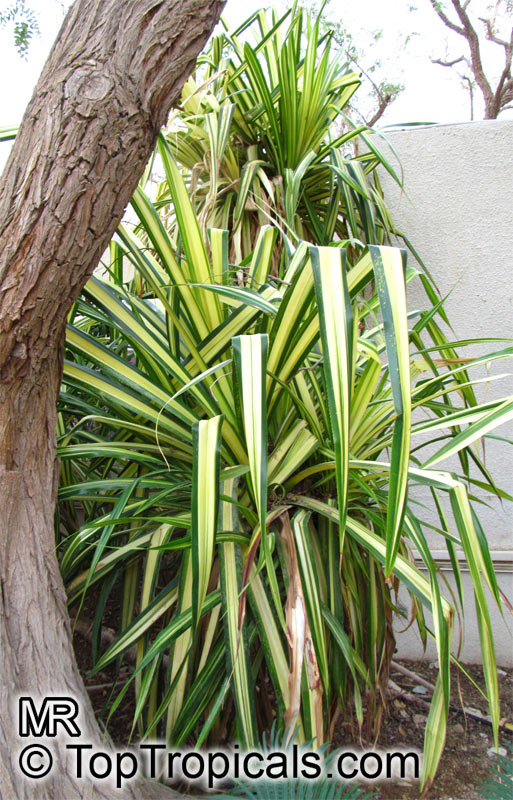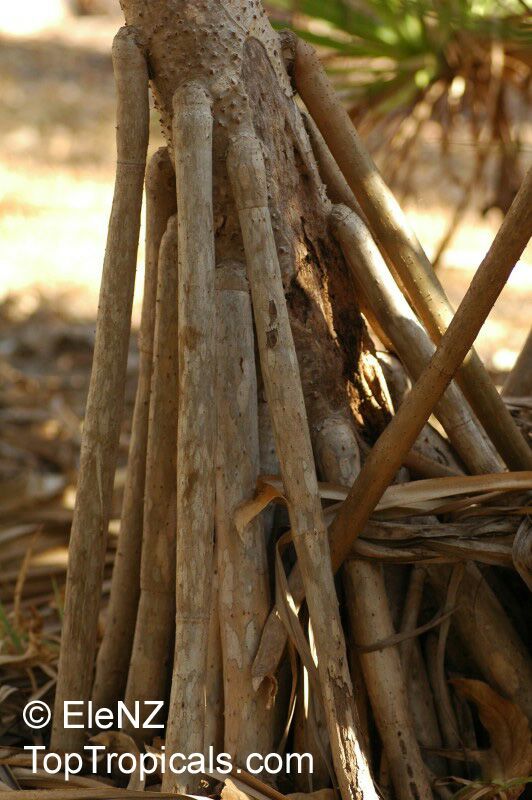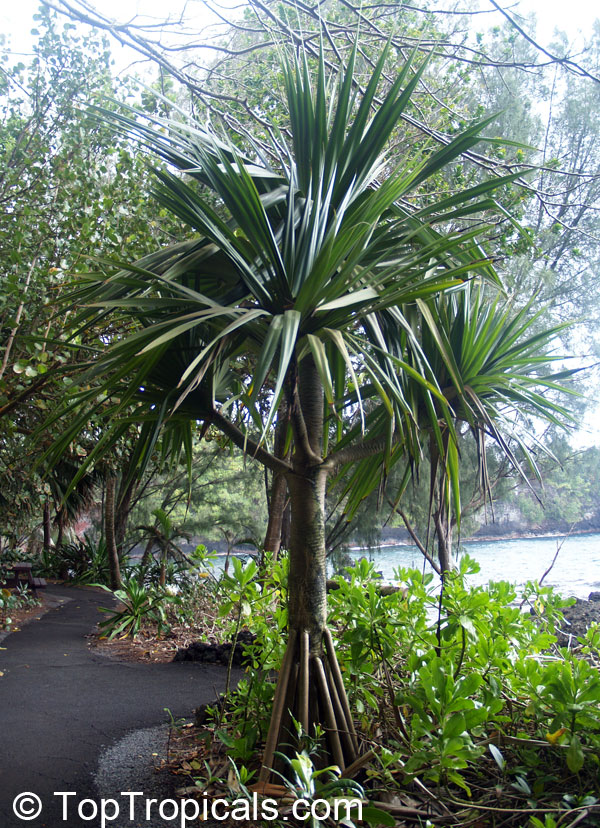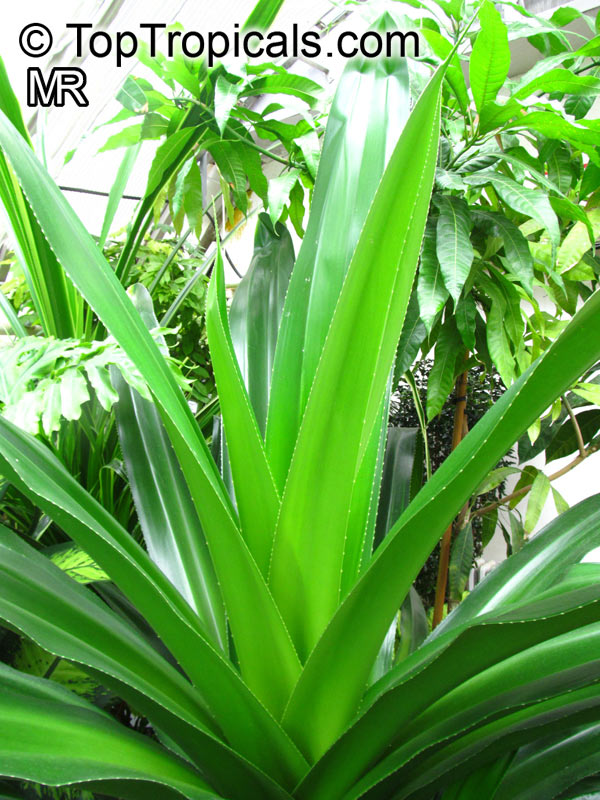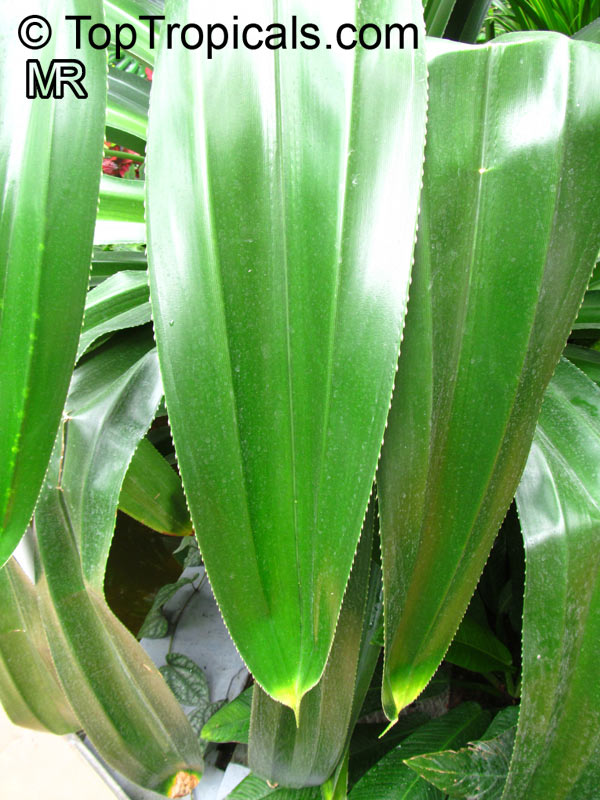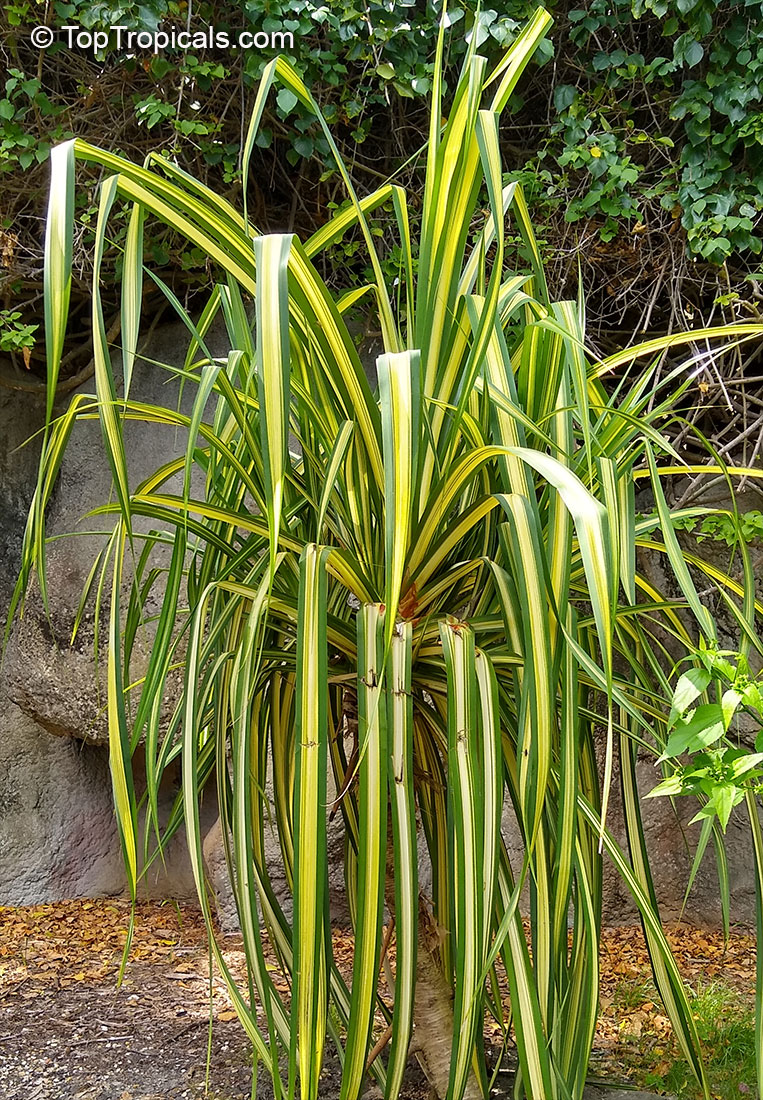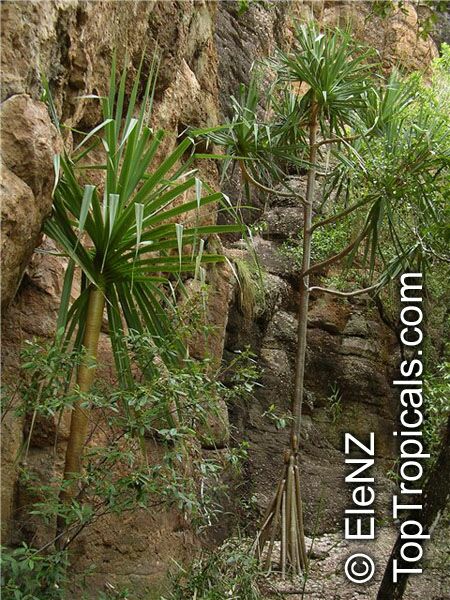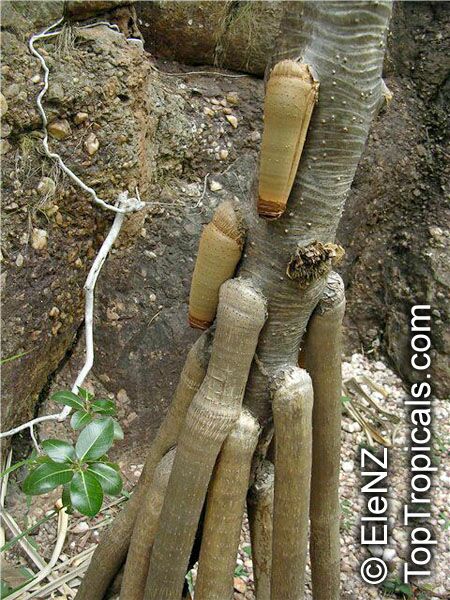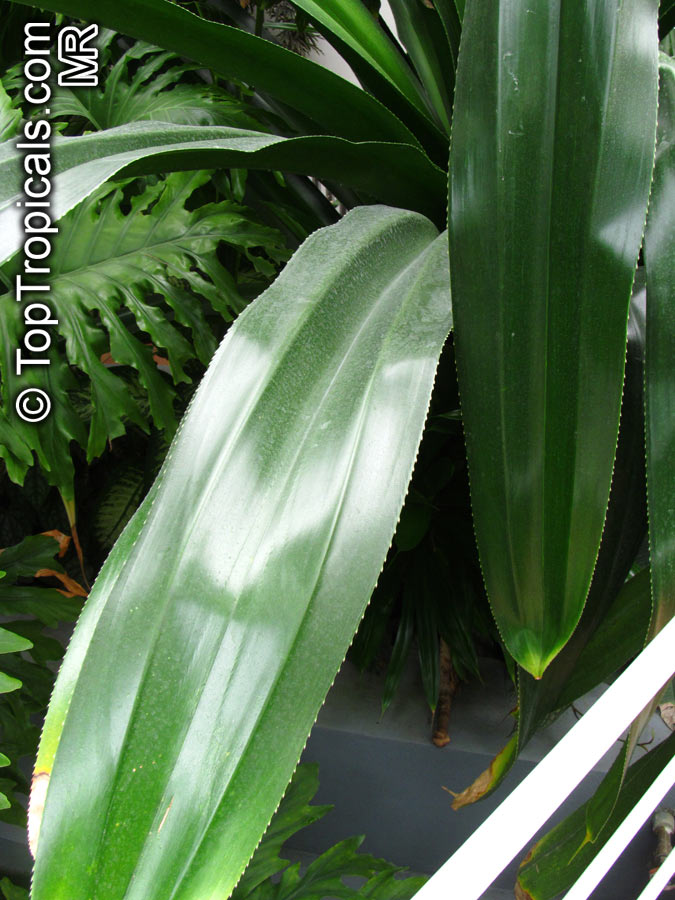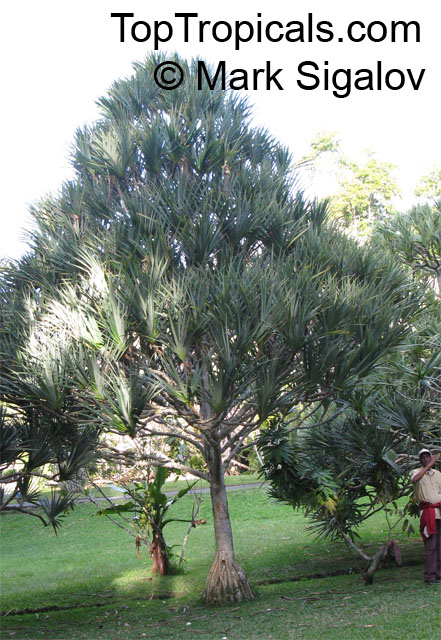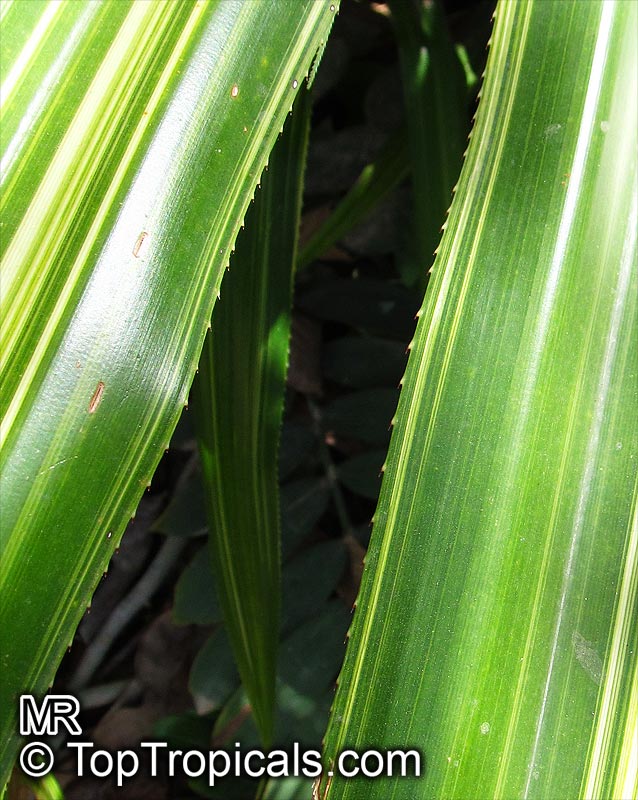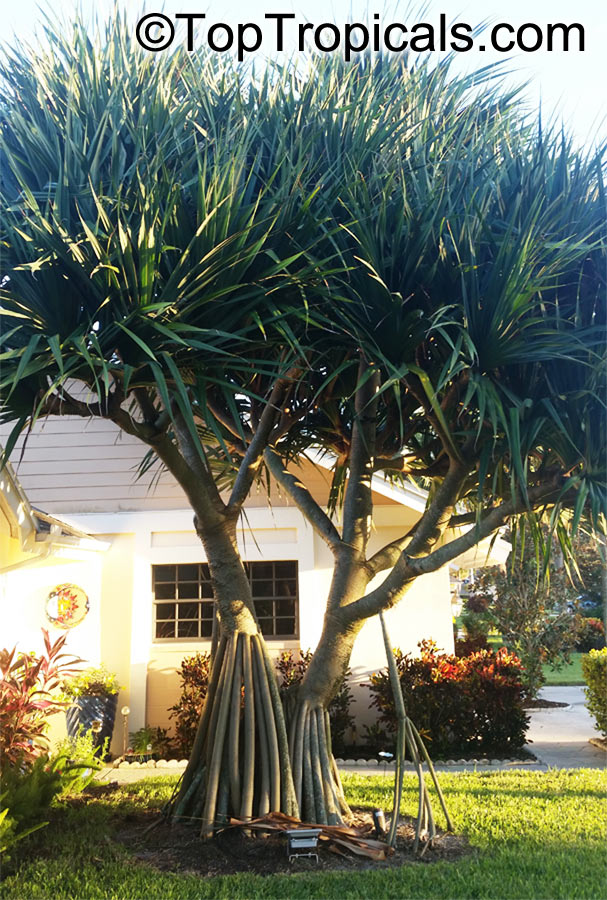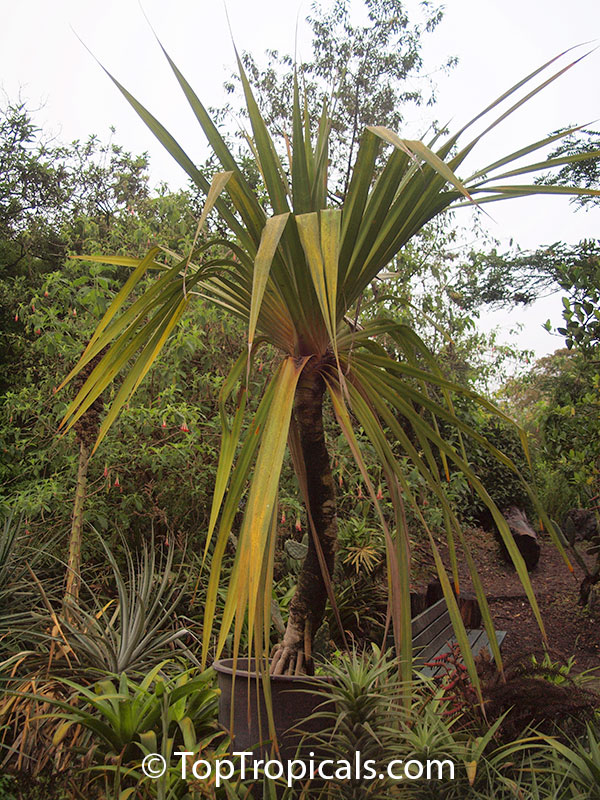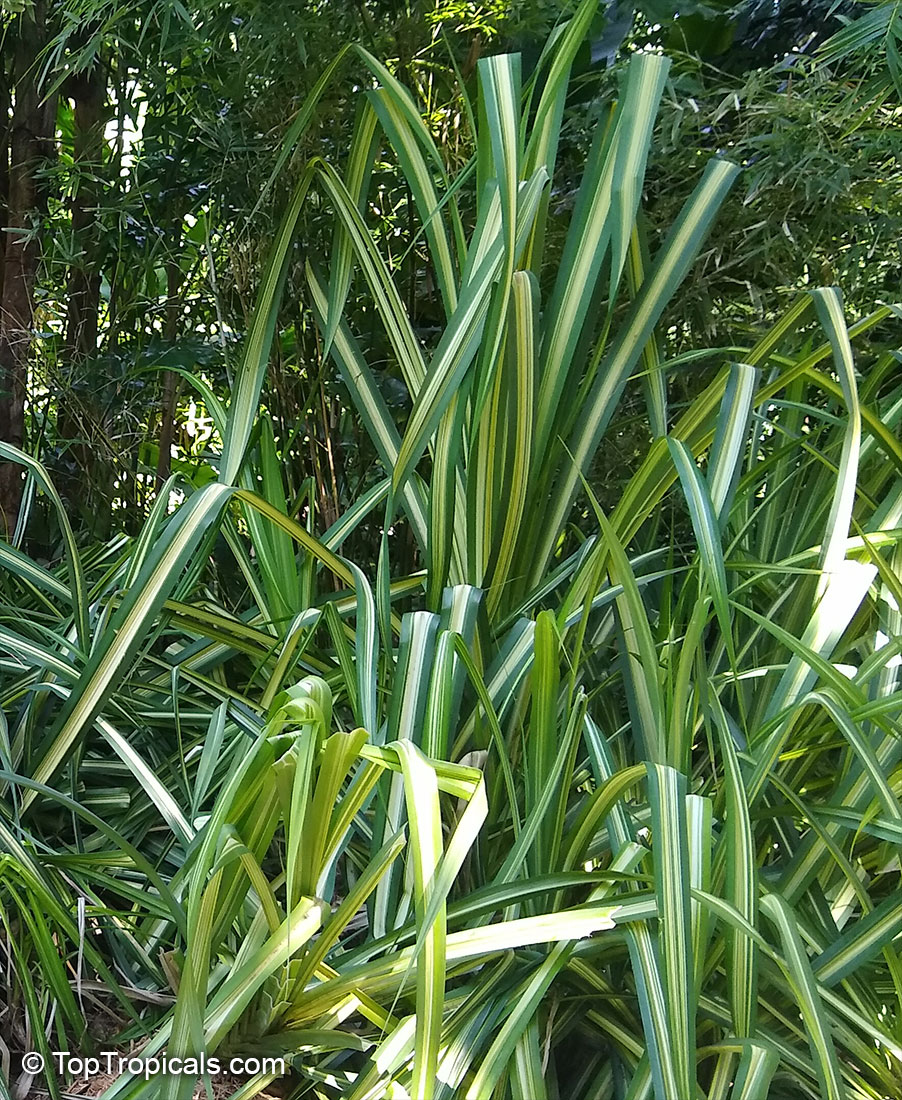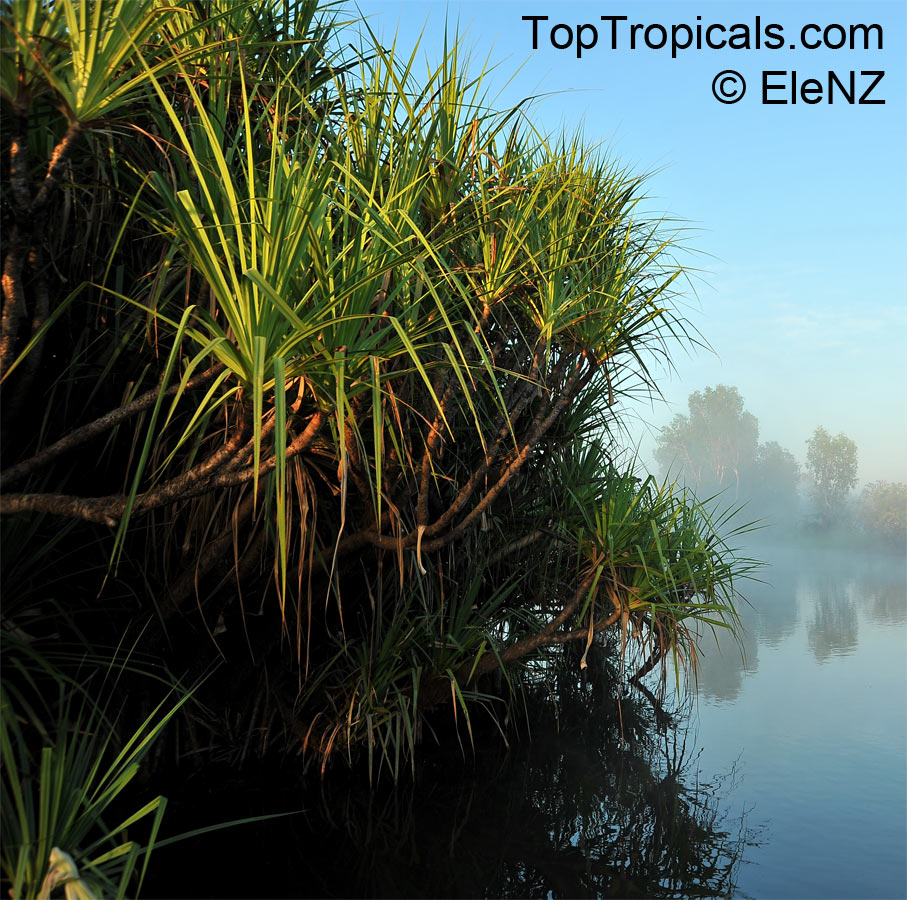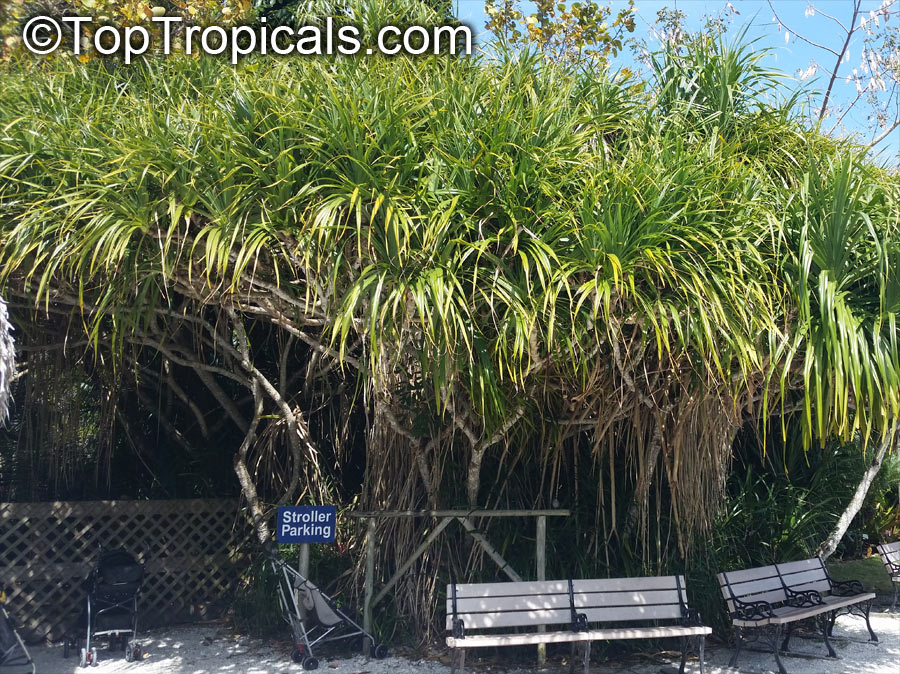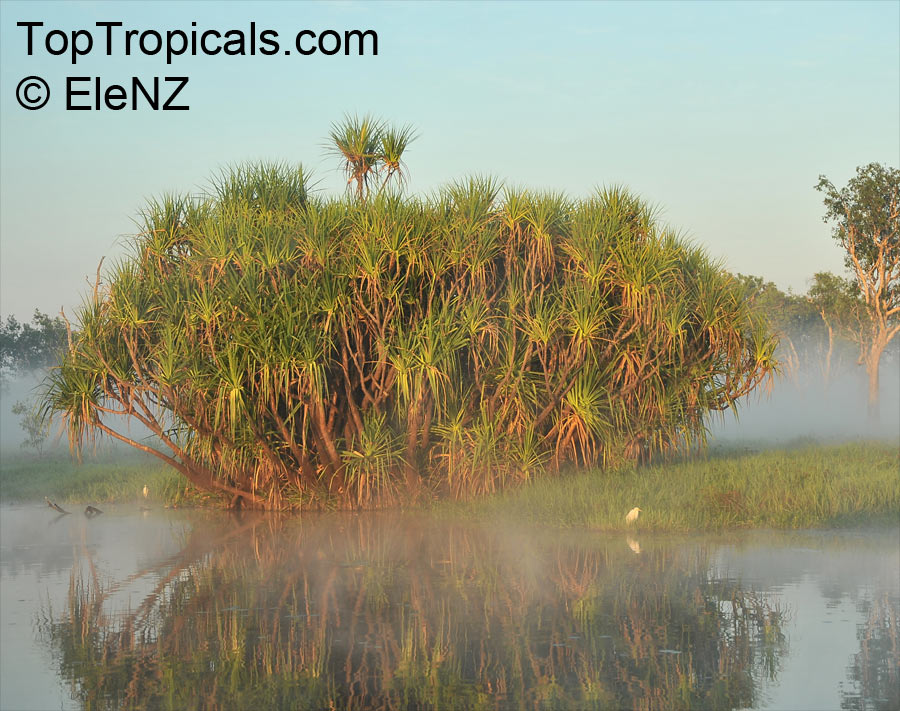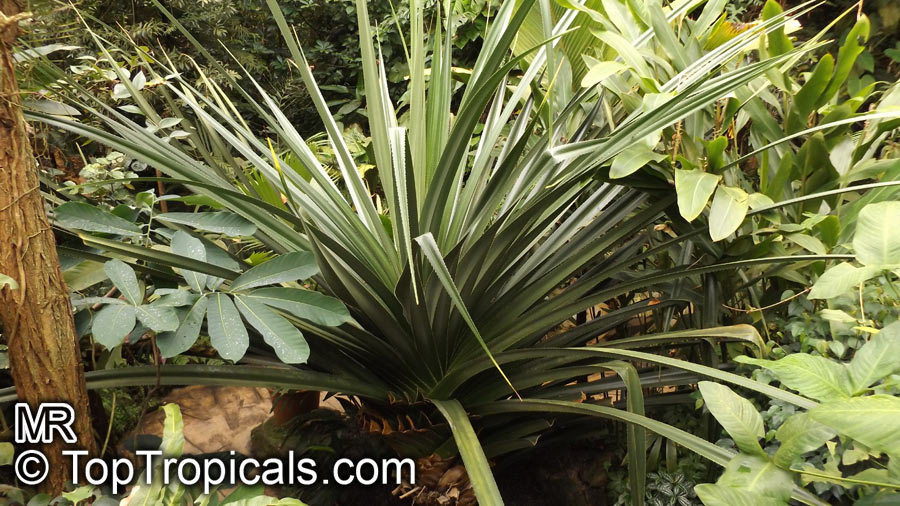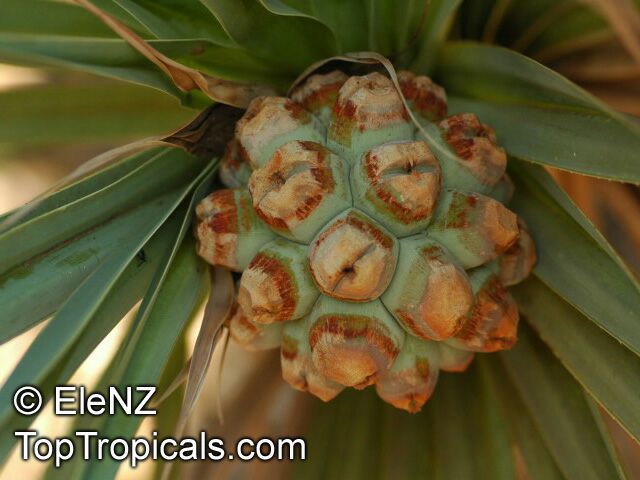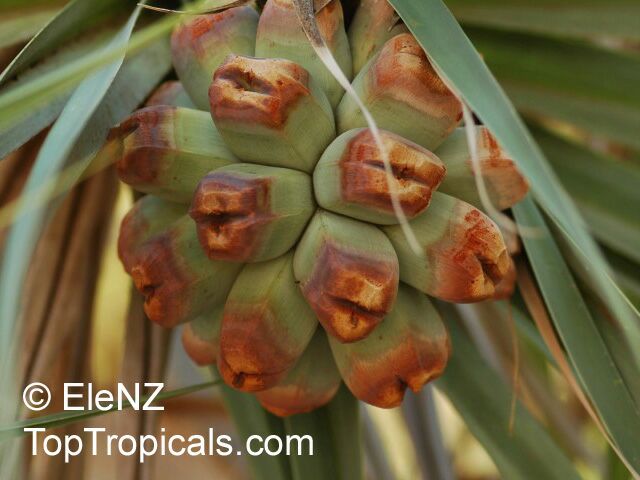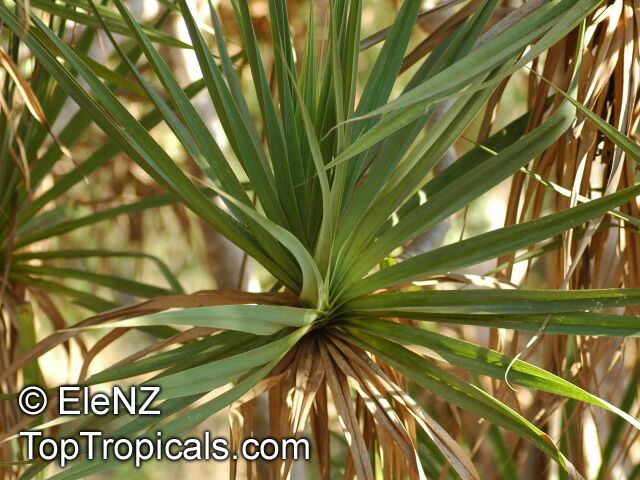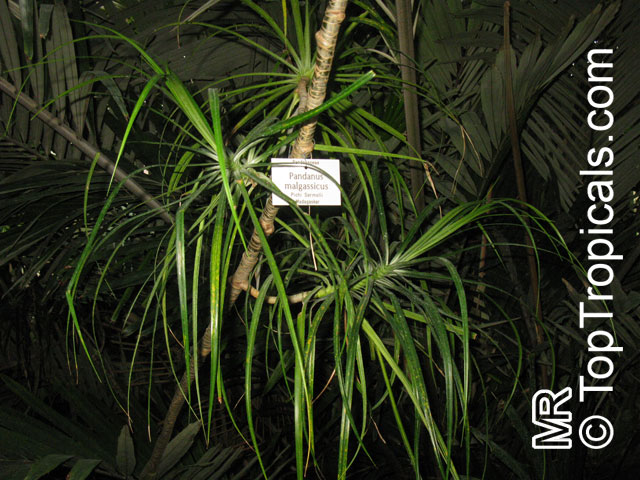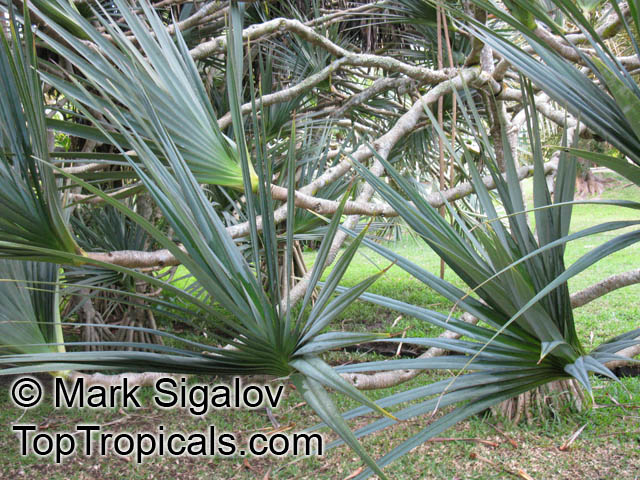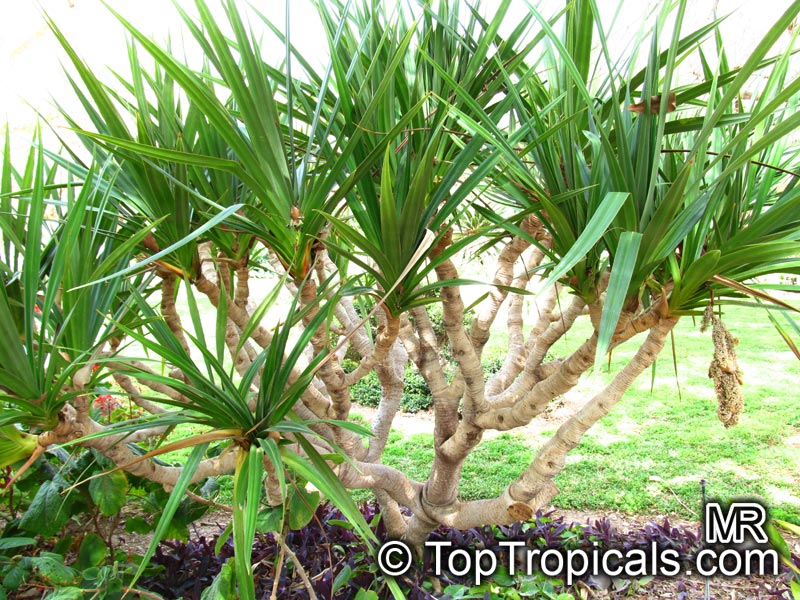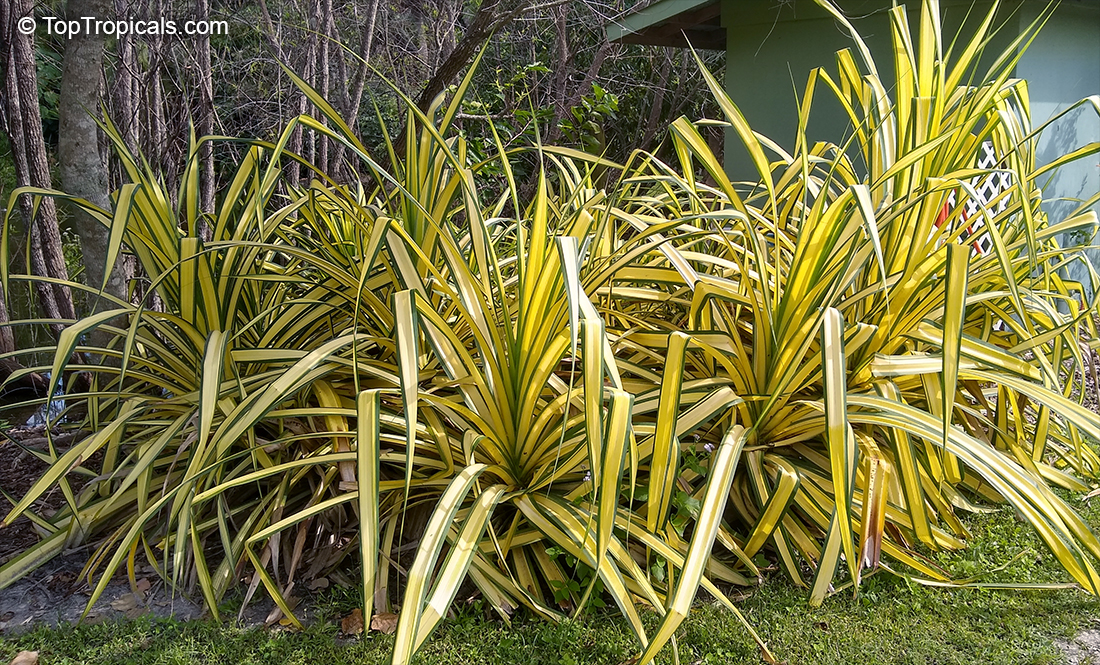Botanical family: Pandanaceae
| Number of plants found: 13 | Next | 
|
Go to page: | 1 | 2 |
Freycinetia cumingiana, Freycinetia multiflora
Climbing Pandanus, Flowering PandanusFamily: Pandanaceae
Origin: Philippines




This interesting plant is very hard to find and rare in cultivation. Originated from Philippines, it is a showy tropical looking climbing shrub (leaves will attach to tree trunks) with unusual orange flowers and distinctive narrow leaves. A centerpiece of any tropical plant collection. Does best in bright indirect or curtain-filtered sunlight. Let the soil become moderately dry between thorough waterings. Very easy to grow, it should be used more.
Night temperatures of 65 to 70 degrees and day temperatures of 75 to 85 degrees are ideal. Propagated any season from the young shoots, or suckers that spring up from the base of the plant.
Being a member of the Screwpine family (Pandanus), it has pointed spiny leaves that can grip tree trunks and act like climbers in the jungle.
Part shade tropical plants, they need perfect drainage. Showy light orange flowers are produced terminally. Can attached to a bark or cinder. Looks great climbing a tree trunk.
Freycinetia funicularis
Flowering Pandanus, Climbing PandanusFamily: Pandanaceae
Origin: Southeast Asia





Freycinetia funicularis is an attractive large shrub that grows 5-10 feet tall, but can also grow as a vine or creeper, depending on its environment. This plant is native to Southeast Asia, and is often cultivated in other tropical and subtropical regions. The leaves are long, glossy, and dark green that take on a bronze hue in winter. It is frost-tender, so needs protection from cold weather. The plant needs to be grown in semi-shade, with regular water and fertilizer to keep it from wilting and become dry.
The most striking feature of Freycinetia funicularis is its showy red, crimson, and vinous flowers. These flowers appear throughout the year, providing a beautiful contrast to the dark green foliage. Though this plant can be grown outdoors, it is best grown in a USDA Zone 9-11.
For success with growing Freycinetia funicularis in colder regions, it is best to mount the vine on wire mesh as it is not hardy enough to survive in cold temperatures. In colder climates, it can be grown in a large pot with abundant drainage and a good quality potting soil. It should be fertilized regularly and watered generously, while also protecting it from cold weather with a thick covering of mulch. Taking the time to follow these guidelines and give the plant plenty of care and attention should ensure that the Freycinetia funicularis will thrive and give plenty of enjoyment for years to come.
Freycinetia insignis
Flowering Pandanus, Climbing PandanusFamily: Pandanaceae
Origin: Australia, New Guinea





Pandanus baptistii
Variegated Dwarf Pandanus, White-striped PandanusFamily: Pandanaceae
Origin: New Britain





Small bush or tree. Leaves spirally arranged, straplike, green with 1-4 central white stripes. Similar species - Pandanus sanderi with golden-yellow central stripes, with margin finely spined; Pandanus veitchii with white stripes on/near margin, margin finely spined.
Recommended Fertilizer: SUNSHINE Robusta - Rapid Growth Booster
Pandanus nitidus, Pandanus stenophyllus, Freycinetia nitida
Narrow-leaved PandanusFamily: Pandanaceae








Palm-like tree. The trunk is stout, wide-branching, and ringed with many leaf scars. These roots are adventitious and often branched.
Pandanus odoratissimus, Pandanus fascicularis
Umbrella tree, Screw pine, Screw tree, Kewra, Kewda, KewaraFamily: Pandanaceae
Origin: South East Asia








Pandanus odoratissimus, known more commonly as umbrella tree, is a small tree that reaches between 10-20 ft in height. Native to South East Asia, this versatile plant is well suited for a variety of environments, ranging from full sun to partial shade. It is tolerant of both moderate water and drought, with Flood and seaside tolerance. Also salt tolerant, it can be grown near coastal areas.
The pandanus tree is most widely recognized for its fragrant flowers. The male inflorescence of this plant is used in the production of Kewra Water, a pleasantly perfumed, sweet water distillate that is a popular flavor agent used in desserts and drinks throughout India. The flowers of this plant are more fragrant and more powerful than even when dried out, making it an ideal plant for any garden.
Besides its fragrant appeal, the pandanus tree also offers a range of ethnomedical benefits. The root of the tree has been used for centuries in Southeast Asia for medicinal remedies, acting as a diuretic, expectorant and antipyretic. The male inflorescence can also act as a cardiotonic, strengthening heart muscles and circulation.
Hardy in USDA Zone 9-11, the pandanus tree is the ideal plant for both warm and cool regions. Planting in a well-drained, rich soil is optimal. Watering the pandanus should be done only when the soil is dry, as Plants are not tolerant of overwatering. When planted in a pot in colder climates, it should be brought in during cold weather as pandanus is not freezing tolerant. Finally, for maximum flowering, fertilizing with a high-nitrogen fertilizer will produce the best results.
Taking into consideration its pleasant aroma, ethnomedical benefits, and hardiness, it's easy to see why the Pandanus odoratissimus has become a popular plant for gardens around the world. Its beautiful, palm-like leaves provide an exotic and appealing appeal to any garden. With a little extra care and protection, you can be sure that this small yet hardy tree will bring you many years of pleasure.
Pandanus pygmaeus
Dwarf PandanusFamily: Pandanaceae
Origin: Madagascar











The Dwarf Pandanus pygmaeus is a small shrub with an ornamental foliage that is suited to and can survive in both hot and cold conditions. This plant is ideal for USDA Zones 9-11 and can be grown outdoors background planting and as low-growing groundcover or a small 2-5 ft. shrub. It thrives in full sun, shade, or semi-shade but requires moderate water throughout the growing season. The plant can be used for bonsai and for decorative purposes due to its unique foliage and foliage colors.
Although moderately drought tolerant, During the winter time this plant can survive temperatures as low as 30 degrees Fahrenheit (F) for a short while when matured. Additionally, this plant is also salt tolerant and can withstand summer heat with relative ease.
For potting, use a fertile, well-draining soil. An important tip is not to overpot this plant, as too much soil can lead it to suffocate instead of thrive. Once grown to a desirable size, repot your plant only when it is too big for its original pot. It is important to utilize the right potting mix for your potted Dwarf Pandanus to make sure the plant does not dry out too quickly.
When overwintering this plant outside in cold regions, protect it from excessive heat or cold. Choose an area with bright light but not direct sunlight. Move the pot inside to a sheltered area until the last winter frost has passed. You will also want to ensure that your Dwarf Pandanus is appropriately watered. Keep the soil barely moist, never saturated. During winter, when the weather is cooler, water less often as the plant is dormant. When the temperature drops below 40F, it is advised to move the pot indoors, away from freezing temperatures.
Overall, the Dwarf Pandanus is an easy to care for, versatile, and attractive ornamental plant that can provide visual interest in any environment and can can be enjoyed for many years.
Pandanus sp.
Screw Pine, Screw PalmFamily: Pandanaceae
USDA Zone: 10-12?








Palm-like tree. Some members of this large genus of over 600 species grow wild along the seashores of the tropical Pacific and can become small trees, while other, shrubbier species lend themselves to garden landscapes. The popular name derives from the fact that the long, prickly leaves emerge in a screw-like arrangement. Perhaps the most decorative species is P. sandcri, with green and yellow striped leaves. Become quite large, 6 to 8 metres in height, and so must be carefully sited in a garden. Pandanus is a very adaptable plant, though it prefers hot, dry conditions. The easiest method of propagation is by cuttings, which root readily when placed directly in the soil. The leaves of these trees are collected by Aboriginal women and are used for weaving clothing material. Dyes can be collected out of the roots and used for rock art painting. Also, the plant is used for treating inflammation by wrapping the leaves around the swollen spot, to create an anti-inflammatory effect. This plant has very attractive showy fruit that looks like pineapple from a distance.
Species and varieties:
Pandanus aquaticus
Pandanus basedowii
Pandanus dubius
Pandanus malgassicus
Pandanus sanderi
| Next |  |
Use link to repeat this search:
https://toptropicals.com/cgi-bin/garden_catalog/cat.cgi?search_op=and&keyword_op=and&language=e&family=Pandanaceae&number=10
&no_change_lang=1&user=tt&sale=1&first=0
